TARANAKI MAUNGA
He Tupua, He Tangata
HE KŌRERO TŪPUNA Pirika Tanginui
KA URUORA
Housing Opportunities
RMA REFORM
SPORTING PROFILES

Cydney O’Hara, Steve Delaney Te Pūoho Stephens
NGĀ POUWHENUA

Te Mamaku Unveiling
HUI-Ā-TAU 2024 and Wānanga Whānau, Wakatū

12TH ISSUE NGAHURU 2023 PĀNUI O NGĀTI TAMA KI TE TAUIHU
HE MAIMAI AROHA
PEGGY NGĀTAIOMA WHITTON (nee Horo)
HINEWAITŌ BIGHAM (nee Rei)
KORO WERA STAFFORD
In recent times, we have seen the significant loss of our most senior pahake of Ngāti Tama descent. They have left an indelible mark on the hearts and minds of our people and the communities that they served. Our thoughts and prayers are with their respective whānau and indeed all of our bereaved families at this very sad time as we reflect on the collective memories that we all share. E moe rā koutou, e au ai te moe.



It’s probably a timely reminder for whānau to protect themselves from the ravages of Covid and the flu in the ensuing months. We encourage everyone to keep warm and keep well. Tēnā tātou katoa.
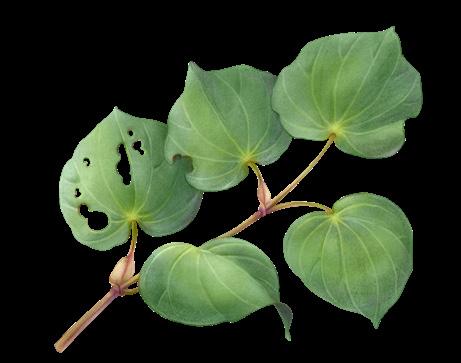 Front cover photo credit: @cjmaddock
Front cover photo credit: @cjmaddock
RĀRANGI ŪPOKO




TE PUNA || PAGE 1
He Kupu Whakataki 2 AHUREA 3 Development of Tama Kōrero 3 • Senae Mitchell 4 • Grant Joyce 5 Taranaki Maunga, He Tupua, He Tangata 6 AHUMAHI 14 Ka Uruora 14 Te Urunga Kāinga Housing Opportunities 15 He Kōrero Tupuna - Pirika Tanginui 16 Ngā Pouwhenua 17 AHUWHENUA 18 Resource Management Act Reform (RMA) 18 Water Services Reform 18 From 3 Waters to Affordable Water Reforms 19 Te Wānanga Whakamana i Te Moana 21 o Te Tai o Aorere Water Conservation Order update 21 AHUORA 22 Grants and Scholarships 22 Sporting Profiles 23 NGĀTI TAMA KŌRERO 26 Morimoritia Ngā Taonga Tuku Iho Exhibition 26 He Wānanga Waiata 26 Te Hura Kōhatu Ki Rototai 26 Te Rākau Pakiaka 2023 27 Events and updates 28 • Hui-Ā-Tau and Whānau Wānanga 29 • Wānanga Mātariki Puanga 30 • Ipukarea 30 • Maramataka Zoom Series 31 6-7 20-23 8-15 16-17
HE KUPU WHAKATAKINĀ TE HEAMANA ME TE POUWHAKAHAERE
Given the connections our iwi and whānau have back to Taranaki Maunga, we also thought it useful to provide an update of the arrangements recently agreed between Ngā Iwi o Taranaki and the Crown. This article also gives some of the historical context to the negotiation and provides deeper insight into the how the unique arrangements give effect to our cultural beliefs in recognising our Maunga as a living being. While this will not be foreign to many of us, this was a significant point for negotiation with the Crown and became the foundation for all subsequent arrangements associated with the Maunga.

Pupuwha manawa o Tama
Whakaeaea manawa o Tama, Tamaariki, Tamahoumoa, Tamateihorangi.
Hikitia ki te rangi, Ranginui, Rangiroa, Rangitahua,
Tahua nuku, tahua rangi
E Tū e hōmai nei tō waiora ora, he ora
He ora ko tōu manawa, ko taku manawa
Tēnei hoki tōu manawa ka tina
Tēnei hoki tōu manwa ka toka
Tēnei hoki tōu manawa ka poutāikitia,
ā ka noho tōu manawa,
He manawa ora e hai
Welcome to the Ngāhuru edition of Te Puna. As in past editions, this periodical is a great opportunity to hear from some of our whānau, report on some of the activities of the Trust and highlight some of the key programmes and opportunities for whānau over the coming months.
In this issue, we hear from Grant Joyce and Senae Mitchell who share some special memories of the challenges and learnings to their reo journey. A journey full of ups and downs but ultimately enriched by reconnecting with whānau and gaining a deeper understanding of our Ngāti Tama identity through the learning of our reo.

In responding to our strategic pou of providing opportunities for whānau to live in Te Tauihu we have made some great progress in standing up Ka Uruora in Te Tauihu. This will be launched at the end of May, with the big focus on driving and implementing opportunities for whānau to participate in Financial Literacy programmes and maintaining a register for future housing opportunities. In light of this, while not specifically in Te Tauihu, our collective commercial investment in Hāpai Housing, have provided an housing opportunity for whānau to register an interest in Glen Innes (Moroki), in Tāmaki Makaurau, so please make contact through the registration process as set out in the article.
Work within the Taiao space is ongoing, with most of our engagements and mahi being applied to upholding our cultural values and interests across the range of different environmental groups, including councils, government and other conservation groups. Further to that, we are also keeping abreast of the extent of legislative and regulatory changes coming down the pipeline. Particularly, with the 3-waters reform and Resource Management Reforms. These reforms will take alot of time and headspace to reconcile, particularly how they are operationalised with council and iwi on the ground.
There is some beautiful kōrero in the ‘Kōrero Tūpuna’ section drafted by Hilary Mitchell alongside some of the great sporting, cultural and educational successes our whānau are engaged with across the motu.
If you have any feedback on this issue, or ideas for future articles please email us whanau@ngati-tama.iwi.nz
In concluding, we hope everyone is well prepared for the Takurua (colder winter months) and the rise of the tau hou (New Year) in June/ July. As you will know, this time will be marked by the rising of Puanga (the star) firstly and Matariki shortly afterwards, and begin the start of a new lunar/ stellar annual cycle. Please don’t forget that as a Ngāti Tama whānau, we will mark this occasion on the 14th -15th July in Motueka this year so please note this down in your diaries and get in touch with the office to register your attendance.
PAGE 2 || TE PUNA
BUTCH LITTLE TE HEAMANA, CHAIR HEMI SUNDGREN TE POUWHAKAHAERE, GM
Nā māua ko Butch, me te aroha nui ki a koutou katoa!
AHUREA | STIMULATE LEARNERS OF TE REO, TIKANGA AND WHAKAPAPA
DEVELOPMENT OF TAMA KŌRERO
The strategic vision for the revitalisation of Ngāti Tama ki Te Tauihu language is:
BY
TAKAPOU HORANUI
Tama Huānganui – Our whānau are connection and supported through their language journey.

PIKI RAUKURA,KŌTORE HUIA
Tama Ringa Kumu – Inspiring our Rangatahi to stand proud in their Tama /Tauihu identity.
TE ARA POU ‘TAMA’
Tama Tokopae – building pathways and opportunities to increase language competency.
TE NIHO TANIWHA
Tama Oho – building proficient Tama champions to lead, build and inspire our communities.
NGĀTITAMA KI TETAUIHU TeRautaki Reo2050
It is time now for us to turn our attention to our language, te reo Māori. Our dream is for it to be like Te Waikoropupū Springs, protected, recognised as a taonga, but forever bubbling in the homes of our people, in our communities and on our marae, feeding us spiritually and culturally, a source of pride for generations to come.
For that we are going to need to be like our tīpuna Tamaariki and Te Pūoho ki te Rangi. We will need to be courageous, we will need a waka to help us get there, we will need to chart new pathways, and we will need to take families with us.
HE WERO
Take on the challenge to champion Te Reo for your whānau. Show your commitment to the revitalisation of Te Reo me ōna Tikanga within Ngāti Tama ki Te Tauihu. Email in your kōrero of your reo journey to: whanau@ngati-tama.iwi.nz
TE PUNA || PAGE 3
2050 TE REO MĀORI WILL BE ONE OF THE MAIN LANGUAGES IN 50% OF ALL NGĀTI TAMA KI TE TAUIHU HOMES
Te Wawata VISION
SENAE MITCHELL
My story is similar to many Māori who were disconnected to the fullness of living in and embracing Te Ao Māori. Born and raised in the era where our reo was not as valued or promoted as it is today and consequently, I am evident of a generation where Te Reo Māori is not my first language. However, I view my learning journey as more an awakening and activation of my Māoritanga. Inherently, I always knew from a young girl this was me, my language, my way of doing. But not having the tools, resources and validation I needed to unlock it. That feeling, the memory I have continues to motivate me. It drives me forward to take the steps I need to follow, in order for me to unlock my reo and all that is encompassed in the process.
Over the years I have participated in many reo courses (and continue to do so). What I learnt quite quickly was how the impact of language trauma can be a barrier. Feeling whakamā; the fact I don’t have the reo and living as an indigenous wāhine in her own country, hits hard at times. Also, my ability to commit and with restrictions like time; or lack thereof, is an ongoing challenge. I acknowledge there have been seasons of having the time but not necessarily the cognitive capacity to retain the knowledge. As well as, being aware that my desire maybe always present but making achievable plans for my learning to be successful requires realistic expectations, commitment and self-compassion. This path is also about my ability to learn doesn’t have to look a specific way; I get to choose that narrative.

This is one of my favourite whakawai , I have it displayed in my home and workplace as a constant reminder. The proverb
“ He iti te mokoroa, nāna i kakati te kahikatea.”
reflects my whakaaro on my personal reo journey – the small intentional steps I take direction that I value can have a significant impact.
One of the biggest contributors to my journey continues to be my tūpuna. Knowing that many had their reo stripped from them sits deep with me. I do not want my mokopuna and future generations to be restricted by a society that does not value Māoritanga, our taonga, our ways of being.
I understand that what I can control and for change to occur; I have a role and responsibility to participate in. Like our tūpuna who had to make decisions for their future legacy - Us. I too realise my responsibility is to learn our reo, to share with my whānau and create an environment where they will never have to experience what our tūpuna endured.
I also acknowledge my journey has been enhanced by those on their own reclamation path. Being surrounded by likeminded individuals tends to inspire, motivate and at times provide a sense of accountability. Another contributor has been participating in Ngāti Tama virtual He Ranga Kōrero and Maramataka Series. These are invaluable additions to my kete. Immersed in these wānanga is providing me with many benefits alongside my reo knowledge: the on-going connection to whānau, solidifying identity and expanding my Iwitanga and Māoritanga.
Like many, my reo journey has shifted from ‘just’ learning our language to healing the personal loss of what our tūpuna and many generations thereafter have experienced. Hearing, speaking and learning our language and revitalising practises is all a part of the healing process. Te Reo Māori is the conduit in strengthening my cultural, my sense of belonging and purpose.
PAGE 4 || TE PUNA
GRANT JOYCE
How did your te reo learning journey begin?
The very first te reo Māori that I learnt was from Janice Manson when she sat me down and taught me my pepeha. Fast forward many years to enrolling in the Te Wānanga o Aotearoa, yearlong Te Ara Reo programme, followed by the second year course also at Te Wānanga o Aotearoa.
Who has contributed most to your reo journey?
My first kaiako at the Wānanga o Aotearoa were Elena Fe’au and her husband Hori Mike who were both were excellent teachers who understood how to create an ideal learning environment. They really managed to imbue in me the idea that it was possible to learn te reo and opened my eyes to the symbolic richness and power of the language.
What have been the most significant challenges in the learning journey for you and your whānau?

Life can be very busy and time very fragmented. Finding the time to sit down and concentrate on learning te reo Māori can be difficult. The commitments of family life and work definitely get in the way. The distractions of technology create bad neural pathways making it difficult to concentrate. Most of my practice and learning happens on long walks around the hills of Te Whanganui-a-Tara. If I could choose my ideal learning environment, I would be born surrounded by speakers of te reo Māori. Failing that, to learn while young would be ideal.
Why is the reo so important to me? to us?
The culture is in the language. If I want to deepen my understanding and connection to te ao Māori then I need to learn te reo. Through deepening our knowledge of te ao Māori we connect with the past (ngā tūpuna), the present (our whānau) and the future (our tamariki). Forming relationships with our iwi & whānau has been a profoundly enriching experience. So in order to progress we must make opportunities to listen, learn and practice.
What does ‘Tama tū ki te Tauihu, Tama ora ki te Ao’ mean for you and your whānau?
It means through the health of te reo Māori we will stand together steadfast, upright and strong to represent our tūpuna, whānau and iwi.
TE PUNA || PAGE 5
“E tū e te whānau!
Kia kaha te reo
Māori! Kiā māia!
Kia manawanui!”
Taranaki Maunga, He Tupua, He Tangata

PAGE 6 || TE PUNA
After more than six years of negotiations and 2 election cycles, Ngā Iwi o Taranaki have initialled a collective redress deed of agreement for Egmont National Park, Taranaki Maunga and surrounding mountain ranges. This historical occasion was marked by an official ceremony attended by Taranaki whānau, tribal leaders and Crown officials signalling a new dawn for the maunga and its ranges.

TE PUNA || PAGE 7
Following the signing of the Agreement - Te Ruruku Pūtakerongo work will now be undertaken on process for ratification and voting by iwi members. This will take the form of the appointment of an independent returning officer to oversee and implement a vote for all iwi members on the proposed arrangements.
Members of the negotiation team are also planning on kanohi ki te kanohi hui across the motu and online zoom hui with one dedicated to whānau living outside of Aotearoa.
We will provide further information regarding timeframes and dates on the ratification process but this is likely to commence late May 2023.
TE RURUKU PŪTAKERONGO
General background
Negotiations over Taranaki Maunga did not commence until all eight iwi of Taranaki had a Crown recognised mandate to participate. This did not eventuate until 2017. The eight iwi of Taranaki are:
• Ngaa Rauru Kiitahi
• Ngāruahine
• Ngāti Maru
• Ngāti Mutunga
• Ngāti Ruanui
• Ngāti Tama
• Taranaki Iwi
• Te Ātiawa
Comprehensive historical Te Tiriti o Waitangi (Treaty of Waitangi) settlements have been completed with the eight iwi of Taranaki. In 2017, the eight iwi of Taranaki established Ngā Iwi o Taranaki to negotiate collective cultural redress over their Tūpuna Maunga (ancestral mountains) and Te Papa-Kura- o-Taranaki, currently known as Egmont National Park. The iwi negotiation team brought together a mix of skills and experience across the iwi, Te Pahunga Marty Davis, Haimona Maruera, Tihi (Daisy) Noble, Liana Poutu, Hemi Sundgren and Jamie Tuuta as the Lead Negotiator.
The eight iwi of Taranaki have a combined population of 45,337 (2013 New Zealand Census).
On 14 March 2017, Ngā Iwi o Taranaki and the Crown signed Terms of Negotiation. On 20 December 2017, Ngā Iwi o Taranaki and the Crown signed Te Anga Pūtakerongo – a Record of Understanding.
On 31 March 2023, Ngā Iwi o Taranaki and the Crown initialled Te Ruruku Pūtakerongo, a collective redress deed. The collective redress will be implemented following the passage of Te Pire Whakatupua mō Te Kāhui Tupua, the collective redress legislation, through Parliament.
The Minister for Treaty of Waitangi Negotiations, Hon Andrew Little (and his predecessor Hon Christopher Finlayson),
and
the Minister of Conservation, Hon Willow- Jean Prime (and her predecessors Hon Poto Williams, Hon Kiri Allan, Hon Eugenie Sage and Hon Maggie Barry), represented the Crown in highlevel negotiations with Ngā Iwi o Taranaki.
The Office for Māori Crown Relations – Te Arawhiti (previously the Ministry of Justice’s Office of Treaty Settlements) and the Department of Conservation represented the Crown in day-today negotiations. Other government agencies supported the negotiations.
Summary of the historical background to the claims of the eight iwi of Taranaki
For generations, Taranaki Maunga and its surrounding ranges have been the central pillar for the iwi, hapū, and whānau of Taranaki. The mountain has long been an honoured ancestor, a source of physical, cultural, and spiritual sustenance, and a final resting place.
Following the establishment of European settlements in Taranaki in the early 1840s, the Crown began to purchase land in the region. Māori in Taranaki were initially keen to engage in the new settler economy, but became concerned when the Crown began to purchase land from individual Māori or small groups, sometimes without the consent or knowledge of key leaders or the wider collective, and sometimes despite their strongly stated objections. In 1860, the Crown used military forces to complete its purchase of land at Waitara, which led to wars between the Crown and Māori in Taranaki. In 1865 the Crown unfairly punished Māori by confiscating 1.2 million acres of Taranaki land, including Taranaki Maunga.
During the century that followed this fundamental breach of Te Tiriti o Waitangi, the Crown repeatedly ignored the rights and interests of the tangata whenua of Taranaki in relation to their ancestral mountain. Following the confiscation, the Crown failed to create most of the reserves it had promised. After further protest by Māori in Taranaki, the Crown eventually returned some reserves, but refused to include most of the mountains in those reserves, instead proclaiming them as a forest reserve, and later a national park. The Crown subsequently established management regimes which ensured that trampers, skĪiers and hunters were involved in the management of the park but made no such provision for tangata whenua. Under those management regimes, traditional Māori practices associated with the mountains were banned while tourism was promoted, and pests such as possums were introduced which led to the complete destruction of native forest in some parts of the park.
In the early 1970s, Taranaki Māori sought to become involved in the management of the park, to have the mountain’s traditional name reinstated, and to have ownership of the mountains returned. Some of their proposals were initially supported by the government but then abandoned in the face of public opposition. Provisions for Māori involvement in the management of Egmont National Park were eventually enacted in 1977, and in 1978 the Crown promoted legislation which returned Taranaki Maunga to the Taranaki Māori Trust Board, but immediately returned it to Crown ownership for the purposes of a national park.
PAGE 8 || TE PUNA
In recent years, Ngā Iwi o Taranaki have led a number of initiatives which have sought to reactivate and strengthen their connections to their ancestral mountains. These have included programmes to re-engage with the sites of significance within the park, control pests, foster indigenous plants and animals, improve scientific understanding of the environment, and promote mātauranga Māori.
Overview- Te Ruruku Pūtakerongo
Te Ruruku Pūtakerongo honours a commitment made by the Crown in individual deeds of settlement for the eight iwi of Taranaki to negotiate collective redress in relation to Taranaki Maunga and Te Papa-Kura-o-Taranaki (currently known as Egmont National Park). Te Ruruku Pūtakerongo centres on the establishment of He Kawa Tupua, a new framework comprising two parts:
• Te Mana o Ngā Maunga: recognising, promoting, and protecting the health and well-being of Te Kāhui Tupua and its status; and
• Te Mana o Te Kāhui: recognising and providing for the mana and relationship of Ngā Iwi o Taranaki with Te Kāhui Tupua.
Te Mana o Ngā Maunga is primarily centred on the legal recognition of the legal personality of Te Kāhui Tupua, which comprises Taranaki and the other Tūpuna Maunga, incorporating all of their physical and metaphysical elements, as a living and indivisible whole.
Te Mana o Te Kāhui is primarily directed towards Ngā Iwi o Taranaki and the recognition and further reconnection of the relationship between the iwi and their Tūpuna Maunga. A collective iwi governance entity, Te Tōpuni Ngārahu, will undertake statutory, and other, functions within the arrangements.
Crown acknowledgements and apology
Te Ruruku Pūtakerongo contains a series of acknowledgements by the Crown where its historical actions arising from interaction with the eight iwi of Taranaki in relation to their Tūpuna Maunga and the national park breached Te Tiriti o Waitangi and its principles.
The Crown apology is the Crown’s formal apology for Treaty breaches as the Crown seeks to atone for past wrongs and build a renewed relationship with Ngā Iwi o Taranaki.
Te Mana o Ngā Maunga
Te Mana o Ngā Maunga provides for the establishment of a new legal framework for the Tūpuna Maunga that is centred on recognition of the legal person Te Kāhui Tupua. The status of Te Kāhui Tupua and Ngā Pou Tupua](values) will be the foundation for the ongoing governance, management and administration of Te Papa-Kura-o- Taranaki.
Te Mana o Ngā Maunga comprises the following principal elements.
1. Repeal of the Mount Egmont Vesting Act 1978
The Mount Egmont Vesting Act 1978 vested Taranaki Maunga in the Taranaki Māori Trust Board, but then required it be returned immediately to the Crown “for the purposes of a National Park as a free gift and as a symbol of love to all the people of New Zealand.” Te Pire Whakatupua mō Te Kāhui Tupua will repeal that Act.
2. Recognition of Te Kāhui Tupua as a legal person
Te Kāhui Tupua will be recognised in legislation as a living and indivisible whole comprising Taranaki and the other Tūpuna Maunga, including Pouākai and Kaitake, from their peaks down to and including all of the surrounding lands, and incorporating all of their physical and metaphysical elements.
Te Kāhui Tupua will also be recognised as a legal person. Reflecting the view of the Tūpuna Maunga as a living and indivisible whole, Te Kāhui Tupua will have its own legal personality with all the corresponding rights, powers, duties, and liabilities of a legal person.
While the new arrangements are focused on the national park, the legal personality extends beyond the park boundaries in accordance with the iwi view of their ancestor. Although the legal personality exists outside the national park, it does not have any direct effect on private land or the application of any legislation outside the park.
3. Ngā Pou Whakatupua (Te Kāhui Tupua values)
A set of intrinsic values – Ngā Pou Whakatupua – will be set out and recognised in Te Pire Whakatupua mō Te Kāhui Tupua. These values reflect the cultural, spiritual, and historical relationships between Ngā Iwi o Taranaki and Te Kāhui Tupua. Ngā Pou Whakatupua comprise the following five values which represent the essence of Te Kāhui Tupua:
(a) Ko Te Kāhui Tupua, he rārangi maunga here ā-nuku, here ā-rangi (Te Kāhui Tupua, the mountain range binding heaven and earth)
Te Kāhui Tupua is a living and indivisible whole incorporating all of its physical and metaphysical elements.
(b) Ko Te Kāhui Tupua, koia ko ō mātou nei okiokinga, ko mātou nei tō rātou okiokitanga (Te Kāhui Tupua, our embodiment in life and death)
Te Kāhui Tupua represents and upholds the ancestral, historical, cultural and spiritual relationship between Ngā Iwi o Taranaki and their Tūpuna Maunga.
(c) Ko Te Kāhui Tupua, ko te puna i heke mai ai te tangata (Te Kāhui Tupua, from which we descend and take our identity)
Te Kāhui Tupua and its health and well-being are fundamental to the identity, tikanga, reo, and health and well-being of Ngā Iwi o Taranaki.
(d) Ko Tupua Kawa, ko Tawhito Kawa, he kawa ora (The
TE PUNA || PAGE 9
ancestral knowledge, the ancient law, the law of existence)
Te Kāhui Tupua is a source of spiritual, cultural and physical well-being for both:
a. the lands, waters, flora and fauna, and other natural resources of Taranaki; and
b. the people of Taranaki.
(e) Ko Te Kāhui Tupua, he puna koropupū, he manawa whenua, hei mou ake nei i te tini mokopuna (Te Kāhui Tupua, a spring, a source of enduring naturally filtered water and life, protected for future generations)
Ngā Iwi o Taranaki, the Crown, and the communities of Taranaki have an intergenerational responsibility actively to protect the health and well-being of Te Kāhui Tupua.
TE TŌPUNI KŌKŌRANGI: THE HUMAN FACE AND VOICE OF TE KĀHUI TUPUA
Te Tōpuni Kōkōrangi, made up of eight members (four appointed by Te Tōpuni Ngārahu, and four by the Minister of Conservation), will act as the human face and voice of Te Kāhui Tupua.
Te Tōpuni Kōkōrangi will act and speak on behalf of Te Kāhui Tupua, uphold and promote the legal status of Te Kāhui Tupua and Ngā Pou Whakatupua, and promote the health and wellbeing of Te Kāhui Tupua. Te Tōpuni Kōkōrangi will also carry out conservation related functions for the national park, including preparing He Kawa Ora (the national park management plan) and jointly, alongside the Minister of Conservation, deciding whether to grant or decline applications for concessions or authorisations regarding interests in land (e.g. leases).
Te Tōpuni Kōkōrangi will develop a relationship agreement with the Director-General of Conservation and the Minister of Conservation, and will also be able to enter into relationships with relevant agencies, local government, and the eight iwi of Taranaki.
The Department of Conservation will provide secretariat support to Te Tōpuni Kōkōrangi with a commitment to review the secretariat role after the first 3 years.
OWNERSHIP AND MANAGEMENT OF THE NATIONAL PARK
Te Pire Whakatupua mō Te Kāhui Tupua establishes Te Kāhui Tupua and vests the national park land in that legal person, meaning the Crown will no longer own the national park. Te Kāhui Tupua effectively owns itself, in perpetuity. The vesting will include industrial rocks and building stones that form part of the national park and five cultural minerals:
• Kōkōwai (red ochre)
• Kōkawa (Taranaki andesite)
• Pakohe (metamorphosed indurated mudstone otherwise known as argillite)
• Onewa (basalt or greywacke) and
• Matā (black obsidian)
Te Papa-Kura-o-Taranaki will remain a national park administered under the National Parks Act 1980, and Te
Pire Whakatupua mō Te Kāhui Tupua. In addition to the requirements under the National Parks Act 1980, Te PapaKura-o-Taranaki must be administered and maintained to acknowledge and uphold the status of Te Kāhui Tupua and [Ngā Pou Tupua].

The Department of Conservation will retain its operational management responsibility for budgeting, operational planning and delivery within the national park. Nothing in the arrangements displaces the rights of iwi and hapū, including the requirement for decision-makers (including the Director-General and the Minister of Conservation) to engage with iwi and hapū in accordance with section 4 of the Conservation Act 1987.
The Minister of Conservation will, except for interests in land, retain their concession decision-making role, with enhanced processes for involving Te Tōpuni Ngārahu in those decisions.
OFFICIAL GEOGRAPHIC NAMES: TE PAPA-KURA-OTARANAKI AND THE TŪPUNA MAUNGA
Te Papa-Kura-o-Taranaki will be the official geographic name of Egmont National Park. The official alternative geographic names Mount Taranaki or Mount Egmont will be removed and the name Taranaki Maunga will return to the mountain. The names of four other Tūpuna Maunga within Te Papa-Kura-oTaranaki will also have their ancestral names recognised: EXISTING
HE KAWA ORA - NATIONAL PARK MANAGEMENT PLAN
Central to arrangements for Te Papa-Kura-o-Taranaki is He Kawa Ora (the national park management plan), which will set out what activities can happen in the national park as well as setting out expected management outcomes. Existing public processes for the development of this plan are retained and will also provide processes for seeking the views of iwi and hapū with interests in Te Papa-Kura-o- Taranaki.
Te Tōpuni Kōkōrangi will develop He Kawa Ora and recommend it for approval. Te Tōpuni Ngārahu and the Director-General of Conservation will each appoint a lead planner to draft the plan and provide advice to Te Tōpuni Kōkōrangi throughout the process.
PAGE 10 || TE PUNA
NEW OFFICIAL GEOGRAPHIC NAME Pouakai Pouākai Patuha Patuhā Kaitake Peak Kaitake Fanthams Peak Panitahi
NAME
Patuhā
The Minister of Conservation and Te Tōpuni Ngārahu will jointly approve the national park management plan, and the New Zealand Conservation Authority will be provided an opportunity to comment on the draft plan before it is approved.
OTHER TE KĀHUI TUPUA ARRANGEMENTS
Te Pire Whakatupua mō Te Kāhui Tupua will also provide for:
• the protection of the name ‘Te Kāhui Tupua’ from misuse, or from commercial use without the consent of Te Tōpuni Kōkōrangi;
• interim custodian arrangements for Te Kāhui Tupua for taonga tūturu found in Te Papa-Kura-o-Taranaki;
• a tailored application of the Crown Minerals Act 1991; and
• an asset management function for Te Kāhui Tupua exercised by an asset management company.
Te Mana o Te Kāhui
Te Mana o Te Kāhui recognises the traditional, historical, cultural and spiritual associations Ngā Iwi o Taranaki have with their Tūpuna Maunga and Te Kāhui Tupua.
1. Te Iho Tāngaengae, the collective statement of connection and relationship
Te Ruruku Pūtakerongo includes the Crown’s acknowledgement of Te Iho Tāngaengae (a collective statement of connection and relationship) for the particular cultural, spiritual, historical, and traditional association the eight iwi of Taranaki have with their Tūpuna Maunga and Te Kāhui Tupua.
2. Te Tōpuni Ngārahu, the collective entity for Ngā Iwi o Taranaki
Te Tōpuni Ngārahu will be established to perform a range of statutory functions through the arrangements:
• appointing 4 members to Te Tōpuni Kōkōrangi;
• approving the national park management plan jointly with the Minister of Conservation;
• giving approval when adding or removing land from Te Papa-Kura-o-Taranaki; and
• appointing a representative on the Taranaki/Whanganui Conservation Board.

Te Tōpuni Ngārahu and the Director-General will explore opportunities for Ngā Iwi o Taranaki to grow their capacity and capability to participate in operational management activities. Te Tōpuni Ngārahu will also be involved in concessions decisionmaking through a process set out in the Act.
3. Official geographic name changes
Place names recognise iwi association with geographic areas. In addition to the national park and the Tūpuna Maunga names, the following 13 names will be official geographic names:
EXISTING NAME
NEW OFFICIAL (may not be official)
GEOGRAPHIC NAME
Ahukawakawa (sphagnum moss swamp) Ahukawakawa
Bells Falls
Kaitake Range
Karaka Tonga Stream
Te Rere-o-Tahurangi Falls
Kaitake Range
Karakatonga Stream
Kokowai Stream Kōkōwai Stream
Lake Dive Mangōraukawa / Lake Dive
Oakura River Ōākuramatapū River
Pouakai Range Pouākai Range
Stony River (Hangatahua) Hangatahua River
Te Henui Stream Te Hēnui Stream
The Dome Te Umu-o-Taomanawa
Warea River (Teikaparua) Te Ikapārua River
Warwick Castle
Te Tāhuna-o-Tūtawa
TE PUNA || PAGE 11
Ahukawakawa
4. Cultural materials
Te Tōpuni Ngārahu will be able to authorise individual iwi members or the individual iwi Post-Settlement Governance Entities, for:
(a) non-commercial cultural take of flora material within the national park;
(b) possession of dead protected wildlife found within the national park; and
(c) access to riverbeds within the national park for the noncommercial cultural take of cultural minerals by hand.
5. Relationships
Te Tōpuni Ngārahu will enter into a relationship agreement with the Director-General and Minister of Conservation, and the Ministry of Business, Innovation and Employment is committed to establishing and maintaining a relationship with Te Tōpuni Kōkōrangi.
6. Access to facilities
Te Tōpuni Ngārahu will be offered first rights to acquire any surplus Crown-owned buildings in the national park and may explore opportunities for the use of any decommissioned building footprints within Te Papa-Kura-o-Taranaki for purpose built facilities, subject to being consistent with the management plan.
7. Resourcing the arrangements
The Crown will provide a one-off contribution of $35 million to Te Tōpuni Ngārahu to support its establishment, participation in redress arrangements, iwi reconnection to their Tūpuna Maunga and the health and well-being of Te Kāhui Tupua.
The Department of Conservation will provide the ongoing operational funding for Te Tōpuni Kōkōrangi and the fees for the four Crown appointed members.
QUESTIONS AND ANSWERS
WHAT HAPPENS NEXT?
The initialled Te Ruruku Pūtakerongo is subject to the approval of the eight iwi of Taranaki members by a vote (known as ratification). If the collective redress deed receives sufficient support, then it will be signed by Ngā Iwi o Taranaki and the Crown. The Crown will then introduce legislation to Parliament to give effect to the collective redress.
WHAT IS THE TOTAL COLLECTIVE REDRESS PACKAGE?
• Crown acknowledgements and apology for historical breaches of Te Tiriti o Waitangi;
• an agreed historical account;
• the establishment of a new legal framework for the Tūpuna Maunga and Te Papa-Kura-o-Taranaki; and
• cultural redress including a collective statement of relationship and connection, official geographic names, cultural materials redress, relationship redress, and access to facilities within Te Papa-Kura-o- Taranaki; and
• a one-off funding contribution to Te Tōpuni Ngārahu of $35 million to support its establishment, iwi reconnection, and the health and well- being of Te Kāhui Tupua.
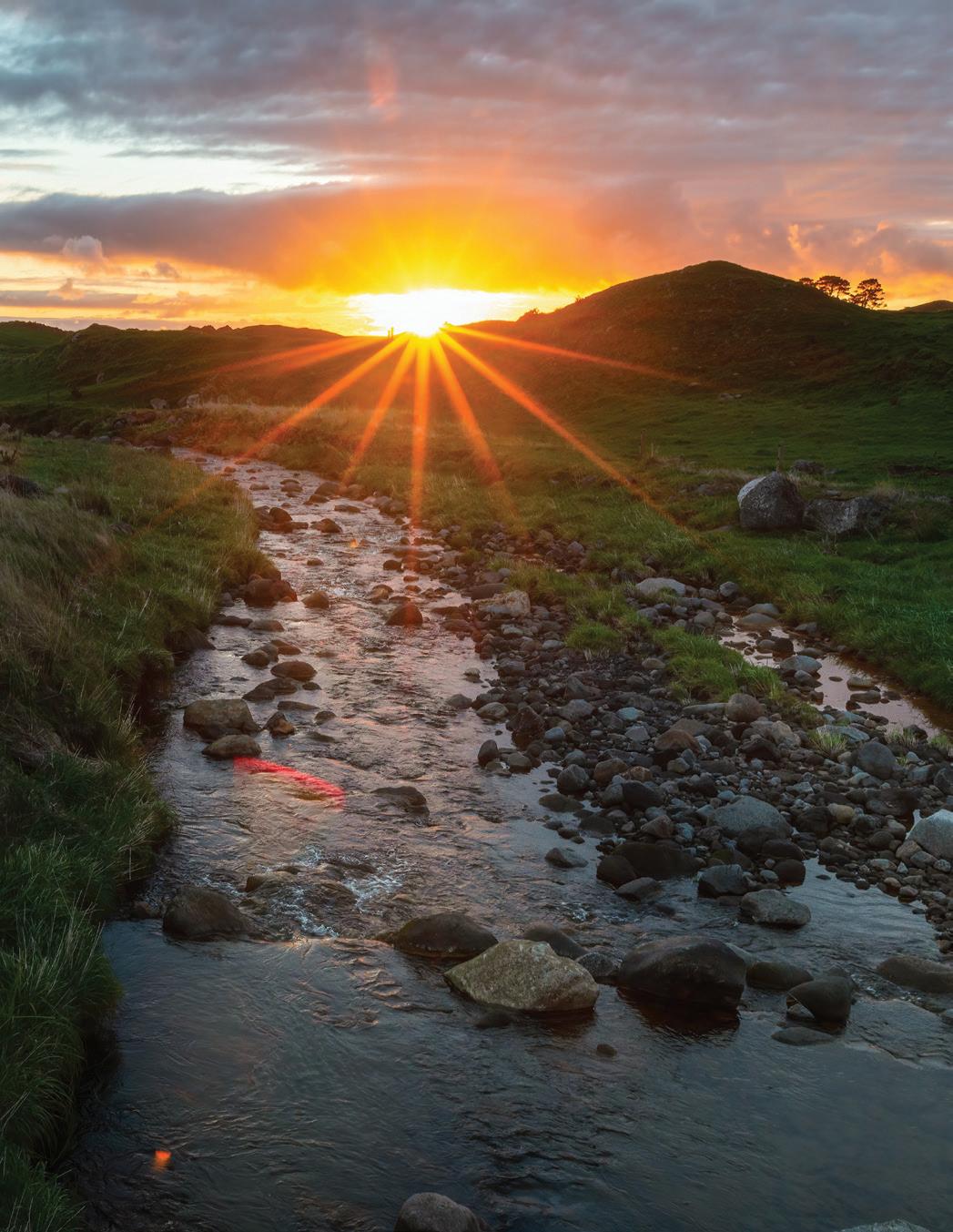
The redress package does not contain any financial nor commercial redress.
IS THERE ANY PRIVATE LAND OR INTERESTS INVOLVED?
No private land is involved. Private interests in or relating to the land, such as concessions or other authorisations, will continue to apply for the duration of their agreements.
WHO WILL OWN THE NATIONAL PARK?
The ownership of the Crown-owned parts of the national park will be vested in the legal personality, Te Kāhui Tupua, which will be its own legal person. Any private property rights, aboriginal title, or customary rights that may exist in the national park will be preserved.
This reflects a Māori perspective in which land and natural features have an identity in their own right that deserve respect and care. It neutralises the concept of ownership by reminding us that Te Papa-Kura-o-Taranaki is not a mere possession but is a treasured place that requires respect and careful stewardship.
WILL TE PAPA-KURA-O-TARANAKI STILL BE A NATIONAL PARK?
Yes. The land will continue to be managed under the National Parks Act 1980, with some modifications to accommodate the agreed redress. This includes key principles such as protection in perpetuity, public freedom of entry and access, and clear recognition of the rights of iwi and hapū with connection to Te Papa-Kura-o-Taranaki.
PAGE 12 || TE PUNA
Hangatahua River
WHO WILL MANAGE TE PAPA-KURA-O-TARANAKI AFTER THE COLLECTIVE REDRESS LEGISLATION IS PASSED?
The Department of Conservation will retain operational management responsibility for the national park including budgeting, operational planning and delivery within the national park. The Department of Conservation and the Minister of Conservation will consult and engage with Te Tōpuni Kōkōrangi on various conservation related functions. Te Tōpuni Kōkōrangi will also have a role in monitoring the implementation of the national park management plan. All operational decision-making will be guided by He Kawa Ora national park management plan, and must be consistent with the National Parks Act 1980, conservation general policy and Te Pire Whakatupua mō Te Kāhui Tupua (the collective redress legislation).
ARE THE PUBLIC’S RIGHTS AFFECTED?
No, the public shall retain the right of freedom of entry and access to Te Papa- Kura-o-Taranaki for inspiration, enjoyment, and recreation.
ARE ANY PLACE NAMES CHANGED?
Yes, Te Papa-Kura-o-Taranaki will be the official name for Egmont National Park. In addition, there will be 18 new or changed official geographic names, including changing the name of the highest peak to Taranaki Maunga.
WHEN WILL THE COLLECTIVE REDRESS TAKE EFFECT?
The collective redress will take effect 70 working days following the enactment of Te Pire Whakatupua mō Te Kāhui (the collective redress legislation).
DO THE IWI OF TARANAKI HAVE THE RIGHT TO COME BACK AND MAKE FURTHER CLAIMS ABOUT THE BEHAVIOUR OF THE CROWN IN THE 19TH AND 20TH CENTURIES?
Not in relation to the Tūpuna Maunga and the national park. All historical Tiriti o Waitangi claims (relating to events before 21 September 1992) in relation to Taranaki Maunga and Te PapaKura-o-Taranaki are settled through the individual settlements of the eight iwi of Taranaki, which prevents the iwi re- litigating those Treaty claims before the Waitangi Tribunal or the courts.
As is the case for all settlements for historical claims, the individual settlements still allow [the eight iwi of Taranaki] to pursue claims against the Crown for acts or omissions after 21 September 1992 in relation to the Tūpuna Maunga and the national park.
WHO BENEFITS FROM THE COLLECTIVE REDRESS?
All members of the eight iwi of Taranaki wherever they may now live. He Kawa Tupua, the new framework centred on the recognition of the legal person, will also bring benefits to the health and well-being of the Tūpuna Maunga (ancestral mountains).



TE PUNA || PAGE 13
Photo credits - Te Korimako o Taranaki
AHUMAHI | DEVELOP OPPORTUNITIES TO LIVE AND WORK IN TE TAUIHU
KA URUORA:
Ka Uruora is a collective iwi charitable organisation offering a programme of housing and integrated services to support whānau members achieve financial independence and improve wellbeing.
Ka Uruora began in Taranaki (where it commenced) and has grown it’s presence across the motu in parts of central Waikato, Hauraki and Te Tauihu. There are currently 4 iwi partners in Te Tauihu with others currently in the process of reviewing their involvement. Iwi partners include, Te Ātiawa, Rangitāne, Ngāti Rārua and Ngāti Tama.
Our goals are to support iwi aspirations to deliver housing for whānau by:


• facilitating the delivery of supporting education, savings and other services / support to empower whānau members move up the housing continuum and achieve financial independence and improve their wellbeing

• facilitating access to funding to underwrite iwi delivery of affordable housing through its partnerships with the Crown and other funding partners
• overseeing and supporting the delivery of a mixed continuum of affordable housing solutions in iwi projects, including Affordable Rental, Community / social rental, together with Progressive Home Ownership
• working with best-in-class service partners to offer a leading best-in class Māori-focused approach to meet the needs of its iwi members.
UPDATE TO APRIL 2023 –KA URUORA TE TAUIHU
• Kai Whakakōkiri | Recruitment - The team have been successful in securing funding from the Rātā Foundation and Westpac Crown Innovation Fund to enable on-going operational delivery.
This has included the recruitment of two new local Pou Tūhono | Iwi Navigators who will work with whānau across the whole region, from Wairau to Mohua.
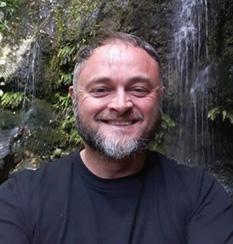
Debra-Lee Wilkie (Te Ātiawa, Ngāti Tama and Ngāti Rārua) and Quilla Kiore (of Ngāti Maniapoto) were appointed in April and are currently working on a plan to empower respective iwi and community groups to support their whānau.
TE URU AHUPŪTEA | FINANCIAL LITERACY PROGRAMS FOR WHĀNAU




Learn the steps you’ll need to take to own your first home. Budgeting, mortgages, deposits and lawyers can all seem overwhelming and out of reach, but with the right advice and some hard work, you might find that you’re closer to achieving your dream of owning a home than you thought.
Financial education is the first step to access our Ka Uruora housing opportunities. Our Financial Education wānanga cover everything from budgeting to mortgage applications. The following elements will be covered throughout the programme; (see table left)
The team is currently planning the delivery of these wānanga to commence in June and be carried out over the course of the year. Sign up now so you are ready when the right opportunity comes along. If you or your whānau are interested in attending please register your interest here by emailing Jasmine at: whanau@ngati-tama.iwi.nz
PAGE 14 || TE PUNA
Housing Options Where to start and what it all means Money Systems Setting goals and managing money Plan for the unexpected Protecting what’s important including insurance, wills and trusts Spending Money What influences us, our attitudes and behaviours Debts and your rights
to reduce debt Looking Ahead
a plan, identifying barriers and putting your plan into action Money Plans Using a budget as a tool to achieve your goals Save Smart Saving and investing, including KiwiSaver and HomeStart grants Free It won’t cost you anything to take part in Sorted Kainga Ora ?
Ways
Making
Left: Debra-Lee Wilkie (Te Ātiawa, Ngāti Tama and Ngāti Rārua) Right: Quilla Kiore (of Ngāti Maniapoto)
TE URUNGA KĀINGA | HOUSING OPPORTUNITIES
Ka Uruora is currently working with iwi collective investment vehicle, Hāpai Housing to provide funding support for housing projects across the country. Ngāti Tama has invested in Hāpai Housing alongside 14 other iwi.

Ngāti Tama have a 10% interest as a foundation investor. Hāpai Housing’s focus is on build to rent housing, and retirement village living. With respect to build to rent housing, there are 2 current projects under development in AucklandMoroki and Kaweka.
Through this relationship, opportunities will be provided to iwi members secure priority access to the rental units, including some units offered with a rental rebate subsidy to reduce the cost for iwi members.
The first project (Moroki) will be available in August, which will include 30 market rentals and a further 20 units with a rental rebate of an average 20 percent. Eligibility criteria will apply. Details of the opportunities and how members can apply will be provided shortly. Keep an eye on this space for future communications.

Hāpai is very pleased to introduce Moroki, a new development offering a range of long-term rental opportunities in Tāmaki Makaurau to call home.

MOROKI
Nau mai, kuhu mai ki te whārangi o Hāpai!
Haere mai aku iti, aku rahi kia tirohia ngā hua me ngā mahi o Hāpai.
He hōnore nui nō mātou kia whakaatū i a ‘Moroki’, he tūmomo mahi waihanga, he whare, he mahi hoahoa hoki.
He mea āwhina i te hapori ki Tāmaki Mākaurau kia riro kāinga hei whakaruruhau.
Tēnā koutou katoa.
Moroki refers to a sense of permanence – linking our past with a contemporary future.
Situated in the heart of Glen Innes, surrounded by great shops, cafes, restaurants, schools, and medical facilities, Moroki offers:
• 50 long-term opportunities with flexible rental terms up to 10 years.
• A range of property options, (predominantly two bedroom units), furnished and unfurnished choices available.
• Public transport options on your doorstep, with bus stops and a train station within walking distance, or a quick 15-minute ride to Auckland’s CBD.
• Host of on-site amenities and services including native-inspired landscaped areas and communal BBQ areas. Vegetable patches and composting facilities for those with green-fingered talents.
• Solar panels, centralised hot water and pre connected utilities and internet.
Moroki is in the final stages of completion and is expected to be available in August this year.
As a special offer for iwi members, Moroki includes:
• An exclusivity period through to 14 July for uri to secure priority access to all of the Moroki units; and
• Subject to meeting eligibility criteria, 20 properties (predominantly two bed units) with rental rebates of, on average, 20 percent* to help manage the cost for iwi members.
These rental rebate opportunities are being offered with the support of Ka Uruora, an iwi charitable trust established to support iwi members access affordable housing.

TE PUNA || PAGE 15
REGISTER YOUR INTEREST
visit www.hapai-property.co.nz/moroki/registeryourinterest
Written by Hilary Mitchell
Pirika Tanginui
Pirika Tanginui was a Ngāti Tama tupuna associated with Aorere and Tukurua in Mohua. He was a very early convert to Christianity, baptised Wesleyan at Te Awaiti in Tory Channel on 1 August 1841. Pirika, his baptismal name, is probably a transliteration of Felix.
Pirika Tanginui was awarded just over 5 acres of Aorere reserve F, jointly with Inia Te Hunahuna, and 100 acres as sole owner in Aorere Section 5; Pirika purchased the other 50 acres of Section 5 from the Government. He also inherited or retained interests in land at Ōhanga, Whaitara in Taranaki.
Pirika married Kataraina Te Ihonga (aka Kataraina Moari or Katarina Te Ha), daughter of Te Ranginohokau and Meira Meira of Tukurua. Pirika moved to Tukurua where he and Kataraina maintained ahi kā after her parents’ death. According to baptism records, they had at least 9 children; the first was born in 1845 and 5 grew to adulthood; Pirihira, Harawira (Wīremu), Erena, Hopiha, Mata, Te Rihi (Taura), Meriana, Pirini and Kaita (Raita). However, in 1888, only four including Pirihira, Harawira, Mata and Te Rihi were listed as persons entitled to the Wellington Tenths.
Te Ranginohokau (Ngāti Tama) and Inia Te Hunahuna (Te Āti Awa) are represented in their respective carvings in the whare tūpuna Te Ao Mārama, at Onetahua marae in Mohua (Golden Bay).
Pirika is registered on the Massacre Bay Electoral Roll for 1857 and 1858 as farmer and freeholder of Tukurua. Both he and Kataraina signed an 1856 Ngāti Tama Deed ceding their claims in Massacre Bay for L 110.
(Tanginui Pirika)
In 1855 Tinline, a Government agent, investigating a dispute over land ownership with a Pākehā family wrote of Pirika: “He bears a good character as an obliging and industrious man, and it appears that he had fenced in and cropped a portion of these old cultivations…” i.e. the disputed land. In 1865, Alexander Mackay, Commissioner of Native Reserves, recognised the rights of the Pirika whānau at Tukurua.
A Pākehā neighbour, Elizabeth Caldwell, hoped for Māori help with her laundry, but quickly dismissed the idea of employing “….our nearest neighbours, old Catherine and Pirika her spouse were far above working for hire – she being a great Rangatira.” And when war broke out in Taranaki, she recorded “…our Māori friends began to look very sullen and silent – old Piraka was busy casting bullets ‘to shoot the white man’ he said when the boys questioned him.”
At some time in the 1870s the Pirika whānau left Tukurua to live in Taranaki, and Pirika Tanginui died at Parihaka in about 1880. The Caldwell family thought Tukurua was abandoned after a number of tuberculosis deaths there, but the whānau may have moved to protect their lands under threat in Taranaki, and to support the Parihaka protest movement as other Ngāti Tama whānau did like the Rāmeka whānau of Tākaka.
The Mitchell whānau of Tākaka are descendants of Pirika Tanginui who have maintained ahi kā since the 1830s. The Tōpine whānau who shifted to Tākaka in 1978 are also Pirika descendants. Eddie Tōpine was caretaker at Onetahua marae until his untimely death on December 16, 2022. He is buried at Rototai cemetery in Tākaka.

PAGE 16 || TE PUNA HE KŌRERO TŪPUNA
Meri Rangiauahi Mōrehu and whānau, c. 1918-1920: L. to R.: Hoani Meihana, Ruka (Luke) Mitchell, Ngāwati Mitchell (nee Mōrehu), Meira Meira Teihonga Mōrehu, Takarangi Mōrehu, Hārata Mōrehu; seated - Meri Rangiauahi Mōrehu. Children of Ngāwati and Luke Mitchell
Ngā Pouwhenua
After several months of planning and preparation, the fourth and final pouwhenua was blessed and unveiled in an intimate ceremony at Tasman School on Wednesday 22 March 2023. The pouwhenua called Te Mamaku takes its name from an ancient pā site located on the nearby Kina Peninsula.
The other three pouwhenua are situated at Motupipi School near Tākaka, and Ngā Tīmoti and Mahana Schools near Motueka. They represent the four primary schools that were part of the Ngāti Tama ki Te Waipounamu Trust Treaty Settlement claim in 2013.
The pou are a reminder of the enduring relationship that Ngāti Tama has with all four schools and their local communities.
The Ngāti Tama board and staff would like to take this opportunity to acknowledge our resident Ōtūwhero carver, Tim Wraight for his dedication and passion in completing this ongoing project in a timely manner. We are most grateful. Tēnā koe e Tim me ō mahi rangatira.



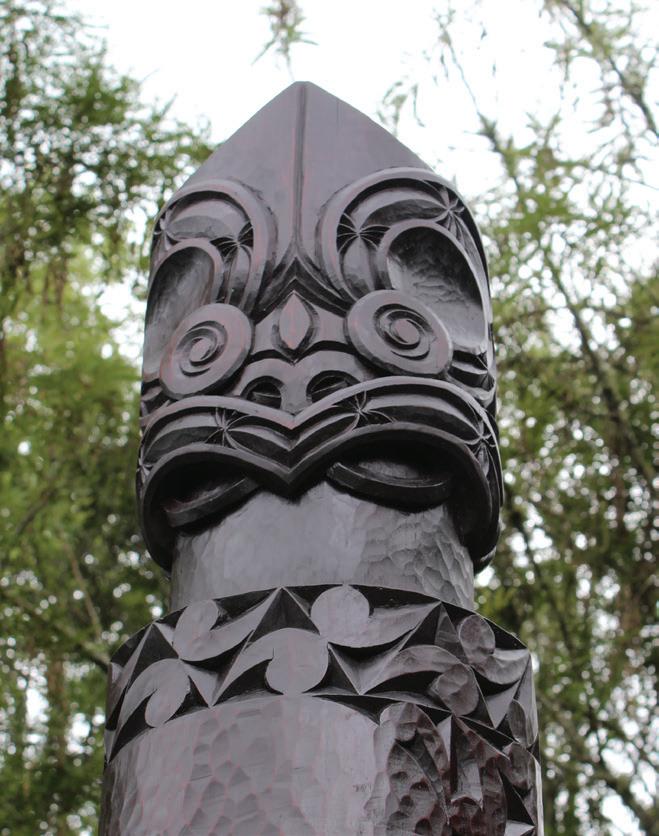
We would also like to acknowledge all four schools, the children, staff, parents and the local communities for your contribution to the wonderful occasions enjoyed by everyone, over the last four years. Tēnā koutou katoa.

TE PUNA || PAGE 17
Top left - Motupipi Pou
Top Right - Ngā Tīmoti Pou
Bottom left - Mahana Pou, Bottom Right - Tim Wraigt Right - Te Mamaku Pou
AHUWHENUA | ENHANCE OUR SIGNIFICANT LANDS AND WATERWAYS
RESOURCE MANAGEMENT ACT (RMA) REFORM
The Government is proposing to repeal the Resource Management Act 1991 (RMA) and replace it with three new Acts: the Spatial Planning (‘SP’) Act, the Natural and Built Environment (‘NBE’) Act and the Climate Adaptation Act. The SP and NBE Bills are currently before Select Committee where many iwi across the country have made submissions for consideration by the committee. The Climate Adaption Bill will be introduced to Parliament later this year and will go through a similar process to seek feedback and submissions from iwi, local bodies, and the business community sectors.
Given Ngāti Tama (alongside other Tauihu iwi) currently have RMA-related redress in our Treaty settlement deeds and legislation, the Government has proposed that changes be madeto our Settlement Deed and Legislation in order for the proposed changes to be aligned and upheld in the new RMA system. The Crown has set out that both Bills will include a commitment to uphold the integrity, intent and effect of all Treatysettlements in the new resource management system.
Ngāti Tama management and the Crown have carried out an initial analysis on the impacts that the new system might have on the Ngāti Tama Treaty settlement which include (amongst other matters) key aspects to ensure our Statutory Acknowledgements and Protocols are upheld and the River and Freshwater Advisory Committee (‘RFAC’).
Statutory acknowledgements require local authorities and courts to take certain actions before making decisions that may impact on the cultural values in areas to which they apply. Mostly they relate to resource consent processes. The River and Freshwater Advisory Committee is an advisory entity consisting of eight iwi appointees (including Ngāti Tama) and has a statutory function to advise on river and freshwater matters in the Nelson, Marlborough and Tasman regions. The RFAC can also provide advice on reviews, preparation and changes to, and notification of, RMA planning documents. The RFAC has not been constituted yet but there are opportunities to participate in local decision making.
In order for the Ngāti Tama Treaty settlement arrangements to be maintained within the proposed reforms, the Crown needs to seek agreement from the iwi to make the necessary changes to the Ngāti Tama Deed of Settlement and Ngāti Tama Claims Settlement Act 2003.
Following any agreed changes, the Ngāti Tama Treaty settlement legislation will be signed via a deed to amend and introduced to Parliament.
WATER SERVICES REFORM BACKGROUND: How did we get here?
The early proposals for reforms were triggered by a 2016 campylobacter outbreak in Havelock North which left four people dead and thousands sick.
In May 2017, under the previous National Government, an official inquiry criticised councils for failing to safeguard town water supplies. By June, then-Local Government Minister Anne Tolley proposed a cross-agency review of the three watersstormwater, drinking water and wastewater - to Cabinet.
In July 2019, a Government inquiry into contamination recommended a dedicated water regulator and stronger Government stewardship of wastewater and stormwater.
A year later in 2020, the Labour Government launched its Three Waters Reform programme. At the time it was estimated to cost $761m. The Government also passed the Taumata Arowai Water Services Regulator Act, which created the water regulator Taumata Arowai.
In June 2021, then-Local Government Minister Nanaia Mahuta provided more detail on the reform, including a four-entity model. That would establish four water services entities across the country. The Government argued this scale would allow for the amount of borrowing needed to fund infrastructure upgrades - something local and regional councils are unable to do. The early proposals were all optional for councils during this time, but the ensuing months saw the government change tact making the reforms compulsory, triggering opposition from many regulatory bodies and interest groups alike.
Ngāti Tama’s submission supported the intent of the overall reforms but expressed concern that the approach to governance and management would not produce meaningful mana whenua involvement, possibly undermine public accountability, and place all Te Tauihu Iwi in a water services entity that presided over a geographic area that included, Wellington district, Wairarapa, Hawkes Bay, Poverty Bay and the East Coast of the North Island up to East Cape.
In December 2022, the Water Services Entities Bill passed, which would establish the four new water service entities. In January 2023, following the resignation of former Prime Minister Jacinda Ardern, a Cabinet reshuffle under Chris Hipkins’ premiership saw Minister Nanaia Mahuta replaced as Local Government Minister by Kieran McAnulty.
In April 2023, the Government, following engagement with the local government sector to better understand their concerns, announced the new ‘Affordable Water Reform’ plan. The reform programme has four key outcomes:
• safe, reliable drinking water
• better environmental performance of wastewater and stormwater services

• efficient, sustainable, resilient and accountable multiregional water and sewage services
• making it affordable for future generations
PAGE 18 || TE PUNA
FROM ‘3 WATERS’ TO AFFORDABLE WATER REFORMS

How do these differ to the Three Waters Reforms initially proposed?
Key changes of the prior 3 waters reform and the newly proposed Affordable Waters reform are set out in the table below:
Number of Water Services Entities (WSE’s)
Establishment date
Four WSE’s
Ten WSE’s WSE boundaries closely based on New Zealand’s 16 regional councils and unitary authorities
All four WSEs fully operational by 1 July 2024
Staggered approach to the WSEs becoming fully operational, rather than all ten WSEs going live at once.
New WSEs will begin to be stood up from early 2025, and will all operate by 1 July 2026
Governance structure
Each WSE has a professional competency and skills-based board, appointed by its RRG
No
Regional Representative Group
No requirement for each territorial authority owner to appoint a territorial authority representative to the RRG
Each territorial authority owner appoints one territorial authority representative to the RRG (except in the case of Auckland Council, which will appointthree RRG representatives)
Mana whenua involvement
Equal number of representatives from territorial authority owners and mana whenua on each entity’s RRG
The RRG appoints the independent skills-based board and sets expectations for how the entity is to be run but is not involved in the dayto-day governance and operation of the WSEs
No
TE PUNA || PAGE 19
ISSUE THREE WATERS REFORM AFFORDABLE WATER REFORM
services covered Drinking water,
and
No change
Water
wastewater,
stormwater
change
change
For Te Tauihu, we move from what was known as Entity C to Entity H (see diagram below). Regional Representative Group’s have been maintained under the new Affordable Water Reforms, and in the case of Te Tauihu, there will be three Council seats and three mana whenua/tangata whenua seats on the Regional Representative Group. Regional Representative Groups (RRGs) are the partnership between Council and iwi/Māori. RRGs provide strategic oversight and direction but have no role in the day-to-day governance and operation of WSEs. The role of the RRG for each entity is to:
• appoint the professional board
• to set expectations of how the entity is run that reflect the needs of communities.
• monitor and hold the board to account for meeting those expectations
Auckland, Northland
Far North District
Kaipara District
Whangarei District
Auckland
Waikato
Hamilton City
Hauraki District
Matamata-Piako District
Otorohanga District
Taupo District
Thames-Coromandel District
Taupo District
Thames-Coromandel District
Waikato District
Waipa District
Waitomo District
Taranaki
New Plymouth District
South Taranaki District
Stratford District
Manawatū/Whanganui
Ruapehu District
Whanganui District
Rangitikei District
Manawatū District
Palmerston North City
Tararua District
Horowhenua District
Canterbury, West Coast
Buller District
Grey District
Westland District
Kaikoura District
Hurunui District
Waimakariri District
Christchurch City
Selwyn District
Ashburton District
Timaru District
Waimate District
Mackenzie District
Waitaki District
ENTITY A
ENTITY B
ENTITY C ENTITY D
Bay of Plenty
Rotorua Lakes
Kawerau District
Opotiki District
Tauranga City
Western Bay of Plenty District
Whakatane District
Tairāwhiti - Gisborne, Hawkes Bay
Gisborne District
Wairoa District
Central Hawke’s Bay District
Hastings District
Napier City
Wellington, Wairarapa
Wellington City
Porirua City
Kāpiti Coast District
South Wairarapa District
Carterton District
Masterton District
Hutt City
Upper Hutt City
Te Tauihu - Nelson,Tasman, Marlborough
Tasman District
Nelson City
Marlborough District
Otago, Southland
Dunedin City
Clutha District
Central Otago District
Queenstown-Lakes District
Gore District
Southland District
Invercargill City
For more information and detail of the proposed Affordable Water Reform Plan visit the following site https: www.dia.govt.nz Three-Waters-Reform-Programme
PAGE 20 || TE PUNA
TE WĀNANGA WHAKAMANA I TE MOANA O TE TAI O AORERE
Written by: Dayveen Stephens
The wānanga was led by Aneika Young (Cawthron Institute, Stuart Donaldson (DOC Marine Reserve Specialist) and supported by Renee Thomas (Wakatū Inc). There were close to 25 participants at the wānanga. Representatives from the rōpū Karioi Whakatupuranga Rangatahi, DOC staff, Tasman Bay Guardian members, Ngāti Koata whānau, Ngāti Rārua and Ngāti Tama – Hana Mason and Te Pūoho Ki Te Rangi Stephens were in attendance.
The wānanga was delivered with a two-pronged approach, that is, through a Mātauranga Māori and a scientific lens. The Mātauranga Māori component was led by Ngāti Rārua whānau member Edwina Wehi (Edz). Aneika and Stu led the science component. The purpose of the wānanga was to help whānau better understand our taonga species both in the moana and the waterways. This would potentially be used as a guide for iwi to design and establish their own Cultural Health Indicator Monitoring Framework.

After karakia, mihi and whakawhanaungatanga on Day One, the first session on Pūwaha monitoring took place at Mārahau. It was mainly an observation exercise to identify taonga, kai and tohu species. The activity was to demonstrate our awareness and understanding and in this instance of tuangi (cockles).
On Day Two, the snorkelling trip to the Tonga Island Marine Reserve, was cancelled due to the strong winds and currents. It was replaced with a water taxi trip to Rākauroa | Anchorage, where our whānau had the opportunity to snorkel in the bay which was led by the Tasman Bay Guardians. Upon returning to Kaiteretere, we debriefed and finished with karakia.
The learnings from this wānanga include the following opportunities;
1. To explore a Ngāti Tama Cultural Health Indicator Monitoring Framework (NTCHIMF)
2. To align the NTCHIMF with the Wai Hā a Ngāti Tama strategy
WATER CONSERVATION ORDER (WCO) TE WAIKOROPUPŪ SPRINGS
(April 17-18 2023)
Ngāti Tama has been championing the Water Conservation Order (WCO) on behalf of all the iwi of Te Tauihu through the Environment Court since its inception in 2018.
Based on the premise that Te Waikoropupū will be kept in a pristine condition for the generations to come is the collective responsibility of the stake holders, the council, the community at large and the eight iwi of Te Tauihu.
The last of the hearings spanning almost eleven months was held online to finalise the details before the submission is made to the new Minister of Conservation, Hon. Willow-Jean Prime. Special mention should be made to our co-applicant Andrew Yuill for his ongoing monitoring work and unyielding support of this important kaupapa. E Ānaru tēnei a Tama e mihi nei.
Also, to the community groups, ‘Friends of Golden Bay’ and ‘Save our Springs’, we are indeed very grateful for your support from the outset. E te Pāpā Kevin, tēnā koutou katoa.
We are mindful of the many people who have played an integral role in forging forward with this project for the betterment of all. Congratulations are in order for the team who have carried this kaupapa from inception through to its fruition. E Kura, nāu tēnei kaupapa i morimori, nā koutou ko Margie, ko Aunty Mākere me te hunga kua ngaro atu nei i te tirohanga kanohi. Moe mai rā koutou, e okioki.
A ruling on the submission will be made public in due course.
TE WAIKOROPUPŪ SPRINGS RESOURCE UPDATE
The Ngāti
is proud to announce the Te Waikoropupū Springs Resource is available for use in schools. The resource is a collection of historical, ecological and scientific accounts and approaches to ensuring the care and management of the springs going forward. It is intended as an online educational tool for ages 8+.

Please email comms@ngati-tama.iwi.nz for a downloadable copy. A similar resource is being prepared for Wakapuaka and will be available in due course.
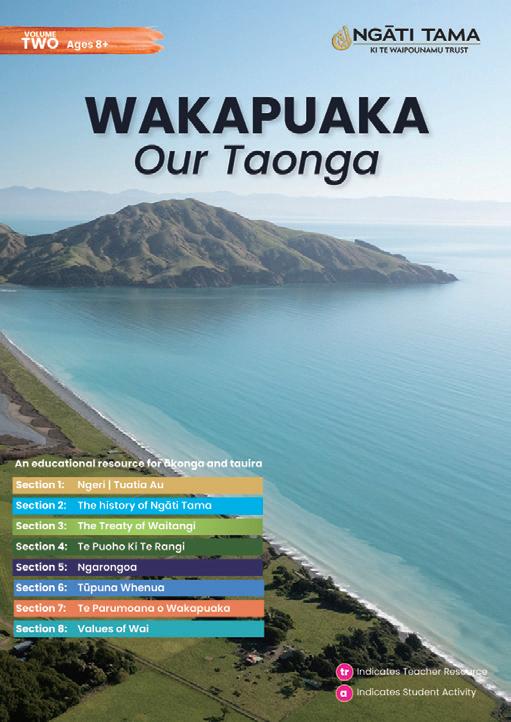
TE PUNA || PAGE 21
Hana and Te Pūoho at Rākauroa (Anchorage Bay).
Tama Communications team
AHUORA | EXPLORE OPTIONS TO SUPPORT WHĀNAU WELLBEING AND INDEPENDENCE
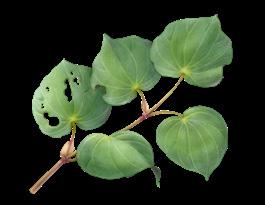
GRANTS & SCHOLARSHIPS
Written by: Nikita Tākai
Last year the Ngāti Tama ki Te Waipounamu Trust Board carried out a review to continue to support whānau wellbeing and independence. As a result of the review, a framework was built to underpin our grants inspired by our values. We are committed to:

1. Providing whānau with long term tools for financial education, planning and navigator services.
2. Assisting Rangatahi with their education journeys.
3. Uplifting the wairua of our whānau by assisting with hauora grants.
4. Supporting our whānau to help with costs associated with raising their whānau and encouraging members to attend Tama events.
The above framework has prompted some new initiatives for example the establishment of a new grant – Tama Tū – which is aimed at supporting our whānau who are experiencing hardship. It has also initiated the development of a network of navigator services across the motu we can refer whānau onto to provide additional and ongoing support.


While the financial year stil has a few months left in it, overall, we have noted there has been a greater uptake in grants than we had last year, especially in the pre-school to secondary level grants.
JOHN MITCHELL SCHOLARSHIP

26/05/1941 – 23/09/2021
At the 2023 Hui-Ā-Tau in Motueka, we were very excited to award our first John Mitchell Scholarship to Kelsea Elkington who is studying a Bachelor of Health Sciences majoring in Māori and Indigenous Health.
It was great to be able to support our tertiary learners in the scholarship space this year. These scholarships will be awarded annually and Te Korowai o Parapara Scholarship dedicated to John Ward-Holmes remains open until 31 May 2023.
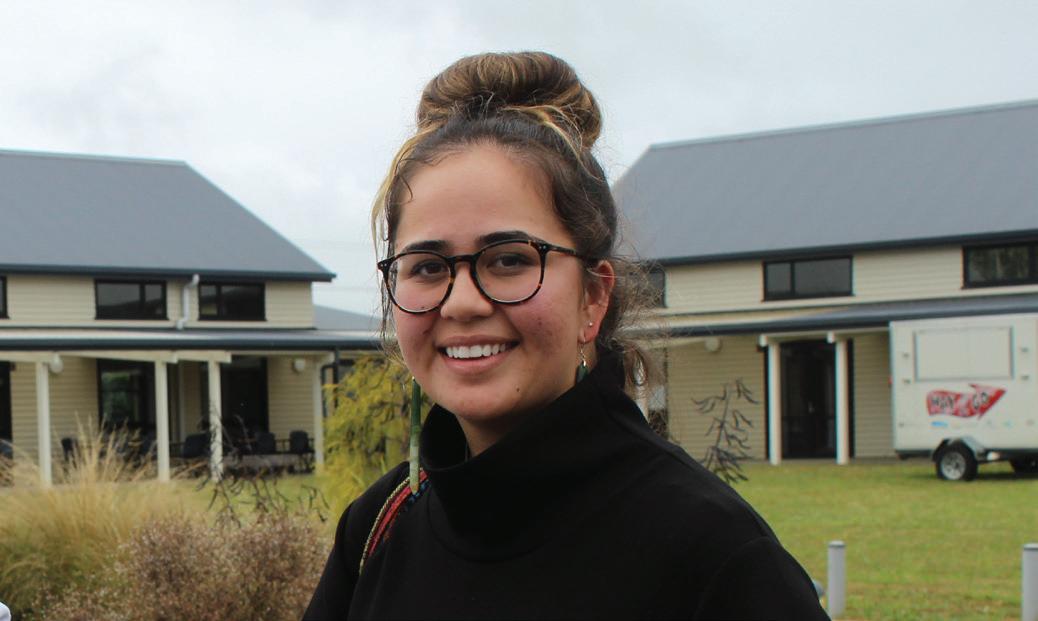
PAGE 22 || TE PUNA
Top right and middle - Hilary Mitchell (Luke Mitchell background) presenting the John Mitchell Scholarship to Kelsea Elkington at the Ngāti Tama Hui-Ā-Tau in Motueka, 2023. Bottom - Kelsea Elkington.
SPORTING PROFILES
CYDNEY O’HARA
Last October Cydney O’Hara represented Ngati Tama/Te Atiawa at the New Zealand Māori Hockey Tournament held in Nelson. Cydney played in the Aotea Wāhine team who won the tournament for the first time in history. She was the recipient of the Sharon Watson Cup - Most Outstanding Player - Junior Woman of the tournament and also named in the U21 New Zealand Māori Junior Womens Hockey Team 2022/2023.
At Easter weekend 2023, Cydney played in the New Zealand Heritage Hockey Tournament in Hamilton representing the U21 New Zealand Māori Junior Women.


It was the first year that the NZ U21 Wāhine Māori team was in the tournament. Cydney was also named as captain of the team. The team played extremely well considering their young age. The team game 3rd overall in the tournament - playing against some tough games from India, Pasifika and also the New Zealand Senior Wāhine Māori team.
Congratulations Cydney. We look forward to hearing about your future endeavours representing New Zealand Māori Women.
TE PŪOHO STEPHENS
STEVE DELANEY
Steve Delaney of Ngāti Tama ki Te Tauihu/Te Ātiawa represented New Zealand in the International Blind Bowls Association (IBBA) World Championships which took part on the Gold Coast of Australia from the 5th - 15th March 2023.



In the final morning game, Sally Marston (Tony East) and Steve Delaney (director Dean Wood) played a strong game to beat South Africa 17-12 and came away with a silver medal in the B4 mixed pairs (Dean Wood) and also making his International debut - a marvellous achievement.
Steve has a disease in his eyes called retinitis pigmentosa. This disease has slowly reduced his vision to 6* of central vision (severe tunnel vision). He has been playing lawn bowls for five years and holds four National titles. Steve was selected to represent New Zealand back in 2020, however, the global pandemic denied him the opportunity. This was the most successful IBBA world championships in Aotearoa New Zealand ‘BlindJacks’ history. Winning a total of five medals - four bronze and a silver. New Zealand will be hosting the next IBBA World
Whānau member Te Pūoho Stephens racked up his 100th premier game for Marist Club in a convincing win over Stoke at Trafalgar Park, Wakatū on 29 April this year. Te Pūoho led his team out onto the field to start the game, which also doubled as his debut for the season.
Since the age of 6 years old, Te Pūoho has played for the Nelson Marist Club alongside his brother Paremata who was five years old at the time. Te Pūoho acknowledges his whānau and his supporters who have been there since day one. “I know a lot of the boys have played 100 games, but I’m happy to have stayed at this club and played for this long.”
The decision to run on with some of the older boys in the starting lineup was part of the celebrations of Te Pūoho’s 100th game. “Marist wanted to celebrate one of our stalwarts in the club. We wanted to make sure the old boys were around him.”

Te Pūoho has many sporting successes, this achievement is high on this list next to his New Zealand Men’s 7’s debut in Las Vegas and Vancouver series in 2018. Te Pūoho thanks the support Ngāti Tama has given him over the years which also have contributed to this success.
Champs in 2026 and Steve is hungry to exceed his debut performance.
Well done on your success Steve. We look forward to seeing you play in Aotearoa in 2026.
TE PUNA || PAGE 23
Left: Cydney (left) holding the Sharon Watson Cup for Most Outstanding Player at the New Zealand Māori Hockey Tournament. Right: Cydney in action at the New Zealand Heritage Hockey Tournament.
Left: Steve (left) holding his silver medal. Right: The BlindJacks representing New Zealand at the IBBA in Australia.
Top: Te Pūoho Stephens (center) with proud parents Anaru and Dayveen Stephens at his 100th game for Marist Club.
Back to school packs
Ngā mihi e te whānau. Our back-to-school packs have been such a huge success and we are so pleased at how many tamariki have received one. We know how important it is for our tamariki and our mokopuna to have everything they need for school. We plan on bringing these back again in 2024!

PAGE 24 || TE PUNA



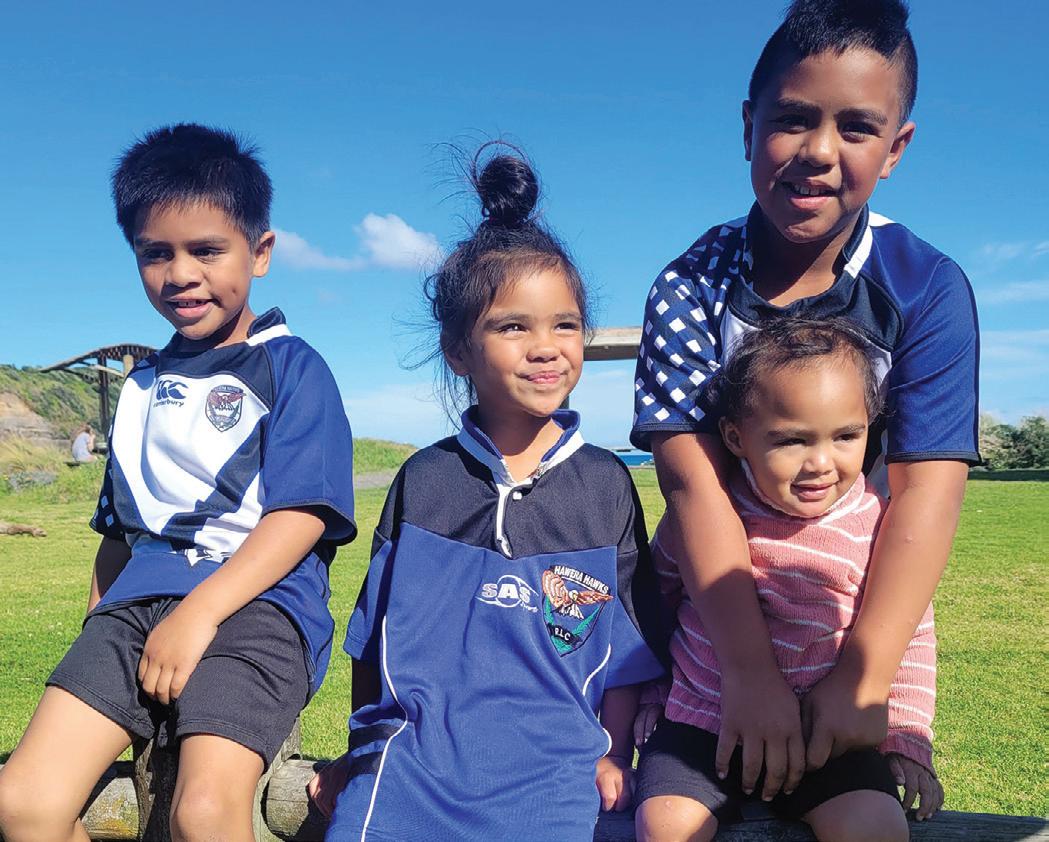
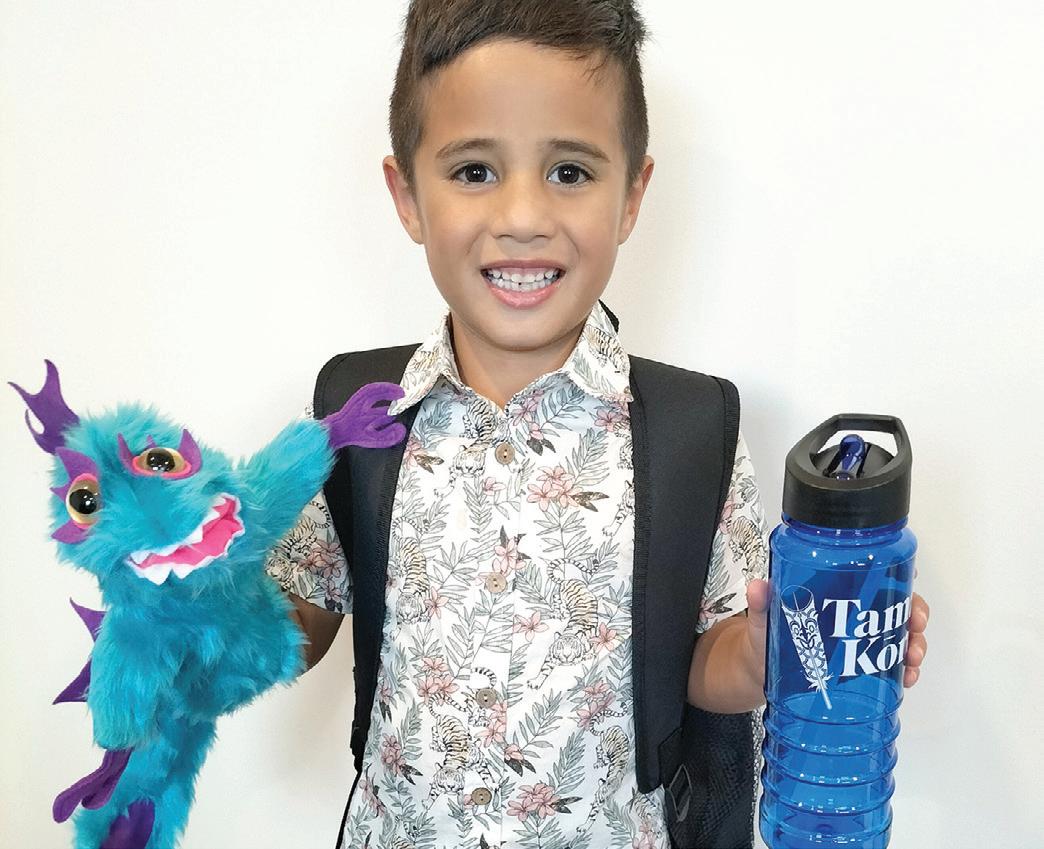
TE PUNA || PAGE 25
NGĀTI TAMA KŌRERO
‘MORIMORITIA NGĀ TAONGA TUKU


IHO EXHIBITION E rere rā (07.04.23)
All eight iwi of Te Tauihu were invited to open the latest exhibition – ‘Morimoritia ngā taonga’ – Treasured: Objects of Mana & Significance at the Nelson Provincial Museum in early April.



Included in the exhibition are an array of taonga from iwi within Te Tauihu and other parts of Aotearoa, contributions from private collections.
Representing Tonga and the local Pasifika community, a ceremonial ‘ngatu’ (tapa or barkcloth) adorned with floral and geometric patterns known as Fata ‘o Tu ‘i Tonga, Tokelau Feletoa, Fo ‘i Hea and Sisi (garland). Such ngatu were cut down so smaller pieces could be distributed as gifts. The exhibition is open from April 6 until July 9.
HE WĀNANGA WAIATA E rere rā (07.04.23)
The first wānanga waiata for iwi members and office staff was held at Onetahua marae prior to the unveiling of John WardHolmes at Easter. The main focus of the hui was to address the need to build upon our repertoire of items to support our paepae.

It drew upon a mixture of traditional and contemporary learning styles to cater for the range of abilities and experiences of the group.
The wānanga began with an explanation of the waiata ‘E rere rā’ composed by the iwi of Muaūpoko from the Horowhenua area who were staunch supporters of the Parihaka prophet Tohu Kākahi.
The other waiata taught included generic action songs and mōteatea to create a more cohesive environment within the Ngāti Tama extended whānau for support at future iwi hui and gatherings. Our monthly kapa haka sessions are also another platform to celebrate the Huānganui thread of the wider Ngāti Tama reo strategy.
TE HURA KŌHATU KI ROTOTAI
Unveiling of John Tahana Ward-Holmes 08.04.23
At the end of Term One this year, the school holidays and Easter break gave whānau the ideal opportunity to return to Te Tauihu and Onetahua Marae. The occasions were our inaugural wānanga waiata which dovetailed nicely into the unveiling for our well known and respected tauheke John Tahana Ward-Holmes.

Close to a hundred whānau, friends and iwi representatives gathered at the Rototai cemetery near Tākaka on Easter Saturday to unveil the memorial stone for Koro John. The service was overseen by Rev. Harvey Ruru with words of tribute being offered by iwi, whānau, friends and members of the local community.
At the conclusion of the service, everyone was invited back to ‘the bach’ to share in kai and more kōrero. Our aroha and best wishes to Chrissy, their mokopuna, immediate family and the extended Ward-Holmes whānau. Tēnā koutou.
PAGE 26 || TE PUNA
Photo credit: Nelson Provincial Museum??
Ngāti Tama staff and iwi members were recently involved in the first of a series of three wānanga called Te Rākau Pakiaka, hosted at Onetahua marae in Mohua. Our General Manager, Hēmi Sundgren, along with other experts including Jamie Tuuta, Mitchell Rītai, Ānaru Wilkie, Morrie Love and John Dobson to name a few, have been instrumental in supporting this concept. The wānanga are hosted by the Wakatū Inc. staff who nominate about a dozen members at a time to participate in the programme at the local marae in Onetahua, Motueka and Whakatū. Tribal repositories share their knowledge of historical accounts about the hekenga – the migration of tribal groupings with affiliations mainly to Taranaki and Waikato, to Te Tauihu o Te Waka a Māui during the early 1800’s. The programme included visits to particular sites of significance to add context to the learnings gained by the participants. The first of the visits was to the Wainui Inlet and falls reputed to be the area of the lair of the fabled taniwha, Ngārara Huarau. Some oral traditions recall the taniwha being tricked by a female captive seeking to escape, by setting him alight. In his attempt to flee the fire, his tail broke off and landed in a pool beneath the Wainui Falls. Hence the redbrown blood stained appearance of the water.
The group were next hosted by the Tasman District Councillor for Golden Bay, Chris Hill, to view the ancient waka found at Anaweka on the Kahurangi coast in January 2012. It’s currently being held at the Fonterra site in Tākaka until alternative arrangements can be made for its long term storage and care.

And lastly, the group was formally welcomed to Te Waikoropupū Springs, given the long standing involvement of Ngāti Tama in seeking a Water Conservation Order (WCO) through the Environment Court. After several years of litigation, that started in 2017-18, the final judgement from the Minister for the Environment, Hon. David Parker, which is currently pending, will attempt to ensure that the ongoing health of the springs is maintained for the use and enjoyment of future generations.

Te Pou Whakatairanga (Whānau Development Specialist) and wānanga organiser, Īhaka Griffin-Matthews, is ‘thrilled with this year’s intake and looks forward to another successful year ahead’. He was very appreciative of the strong Ngāti Tama presence this year. The next two wānanga will be held at Te Āwhina marae (Motueka) in June and Whakatū marae (Nelson) in July.
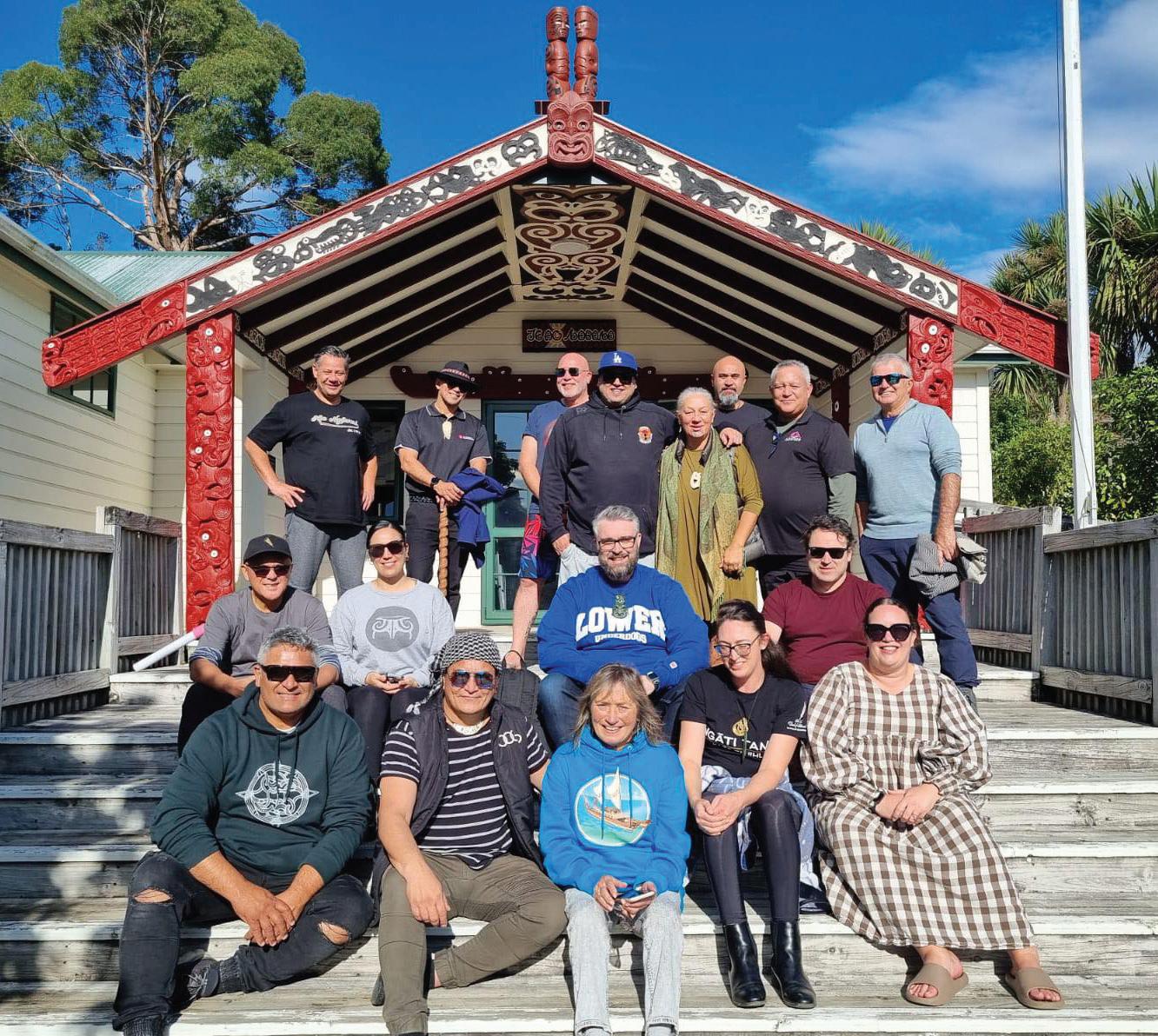
TE PUNA || PAGE 27 TE RĀKAU PAKIAKA 2023
NIKITA TĀKAI
Nikita joined Ngāti Tama in November 2019 after having moved back to the rohe from Te Whanganui-a-Tara. She has previously worked in the health sector at the Medical Council of New Zealand and moved back to Whakatū in May 2019 to be closer to her whānau.


In starting at Ngāti Tama, Nikita took up a position as the Pouāwhina working closely with two General Managers, providing Board secretariat services and general administration duties to the tari.
Nikita then became our Pou Raraunga, undertaking projects to improve internal IT systems as well as working with the Whakapapa Committee to register new iwi members. She also supported the Grants Committee to provide grants and scholarships to the whānau.
Across her time at the Trust, Nikita has loved spending time with the whānau through Ngāti Tama events and would like to thank you for a fantastic experience at the Trust.
Nikita has taken up a role at the Department of Internal Affairs to be part of the Affordable Waters Programme and we wish her all the best in the future.
TAMA CLOTHING
Sun 29th October – Thur 2nd November 2023 TRAFALGAR CENTRE, NELSON
Te Mana Kuratahi is the National Primary Schools Kapa Haka competition. The competitions are a week-long event that brings together 45 of the best primary and intermediate aged kapa haka groups from around Aotearoa. This is the first time this event will be hosted in the South Island and we are delighted to be hosting this event in preparation for the other national events we will host in the next 5 years.
The event will bring approximately 1800 performers and 7000 spectators into the region with a workforce of around 200 volunteers required.
Given Te Tauihu is the host region for this event, it’s important that we showcase our world-renowned manaakitanga/hospitality to the multitudes who will visit our region. We have a collective responsibility as kaitiaki of the kaupapa to ensure our visitors are welcomed with open arms and shown the highest quality hospitality – it’s going to take all of us to achieve this.
If you would like to keep up to date with all of the information about Te Mana Kuratahi 2023 please go to Te Tauihu o te Waka a Māui Māori Cultural Council Facebook page and join their database. Kia ora.


To commemorate the tenth anniversary since the signing of the Ngāti Tama Deed of Settlement in 2013, the office has new merchandise for sale in the way of a t-shirt and bucket hat, to mark this auspicious occasion. The t-shirt has the Ngāti Tama ki Te Tauihu logo on the front, the 10th anniversary logo on the side (arm) and several important sites of significance on the back. The names are a pictorial reminder of our origins and the journeys that our ancestors made during the hekenga –the migrations from Taranaki to Te Tauihu, those many years ago. They are available to purchase at ngatitama.konstruct.com and are $60 each (tshirts) and $45 (bucket hats).
We have a small number of Tama 100% merino ponchos priced at $130 each. Perfect for the winter months!



Email: whanau@ngati-tama.iwi.nz if you would like to purchase one. These are only available through the Tama office.


PAGE 28 || TE PUNA
AVAILABLE AT ngatitama.konstruct.com
Front Back
EVENTS
AND UPDATES
Written by Te Tauihu o te Waka a Māui Māori Cultural Council
Poncho modelled by Sarah Sparks
Unisex Puffa Vest $78
Unisex Puffa Jacket $98
Unisex Trakka Jacket $112
HUI-Ā-TAU AND WĀNANGA WHĀNAU
16 FEBRUARY 2024
Wakatū
SAVE THE DATE!
FRI 16TH FEBRUARY – POWHIRI AT 5PM
SAT 17TH FEBRUARY – SIGNIFICANT SITE VISITS
SUN 18TH FEBRUARY – AGM (10AM – 1PM) HAKARI 2PM
ACCOMMODATION AVAILABLE AT WAKATŪ MARAE

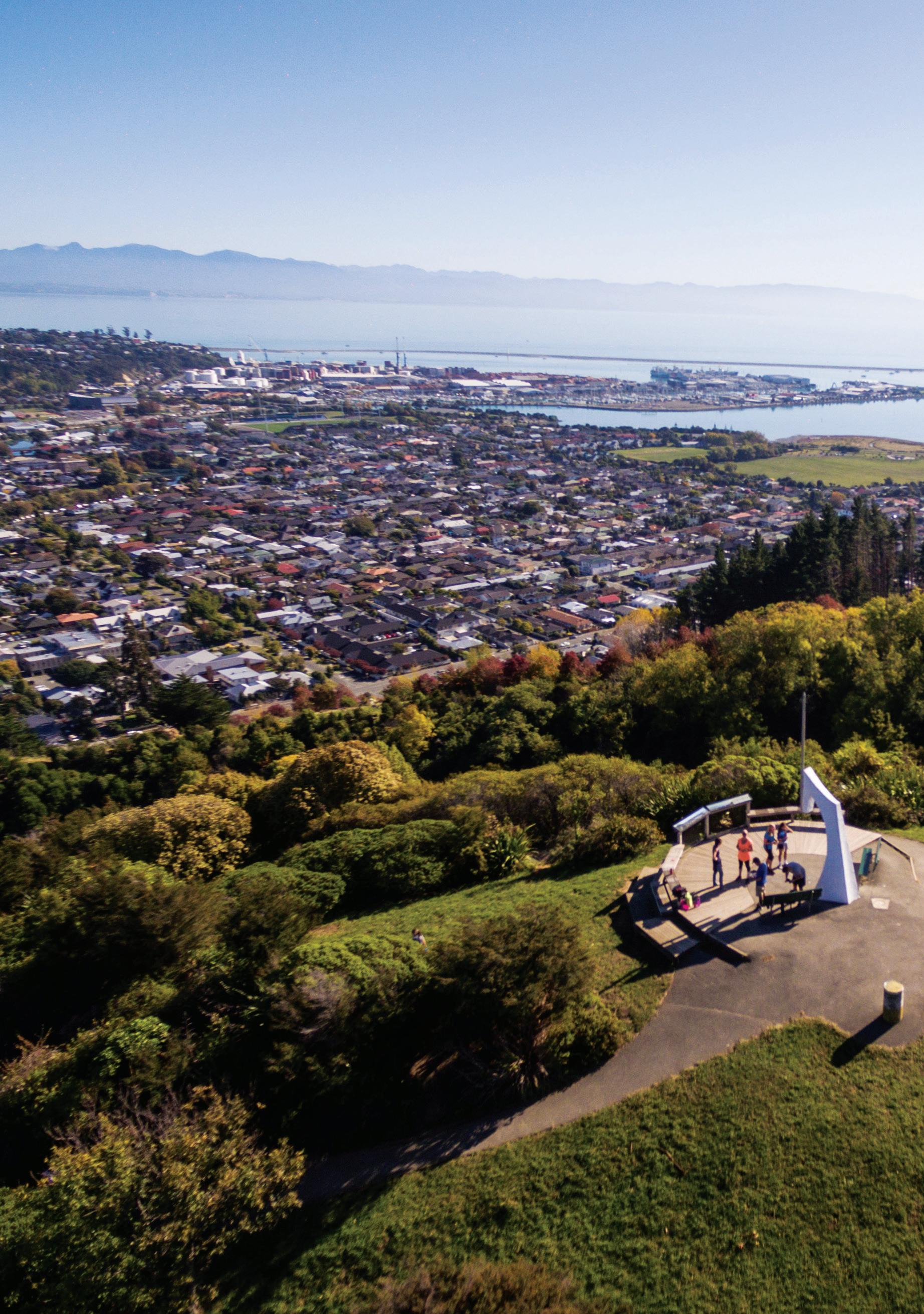
TE PUNA || PAGE 29





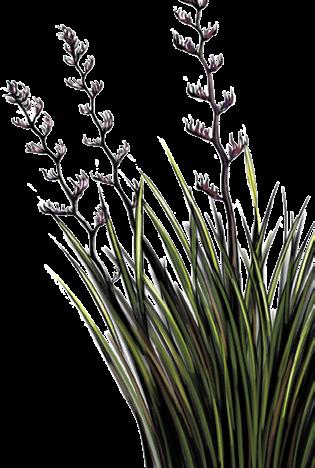


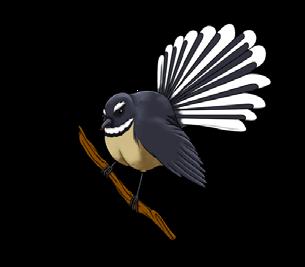
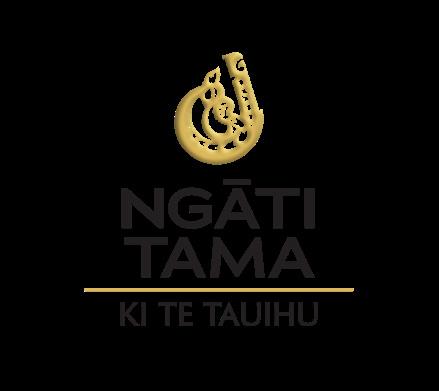

PAGE 30 || TE PUNA EVENTS AND UPDATES PUANGA 10AM - 2PM Thursday 13th July LUNCH PROVIDED Site visit to Bell Island Treatment Plant WASTEWATER. WhAt iS it? do you knoW WhAt grey WATER iS? do you knoW WhAt blAckWAter iS? Where doeS WAsteWAter dischARge To? Limited spaces! Log in to the Ngāti Tama whānau app to register for this wānanga.
Waiata PRACTICE
Whānau in Te Tauihu!
Let’s come together for whakawhanaungatanga and waiata.
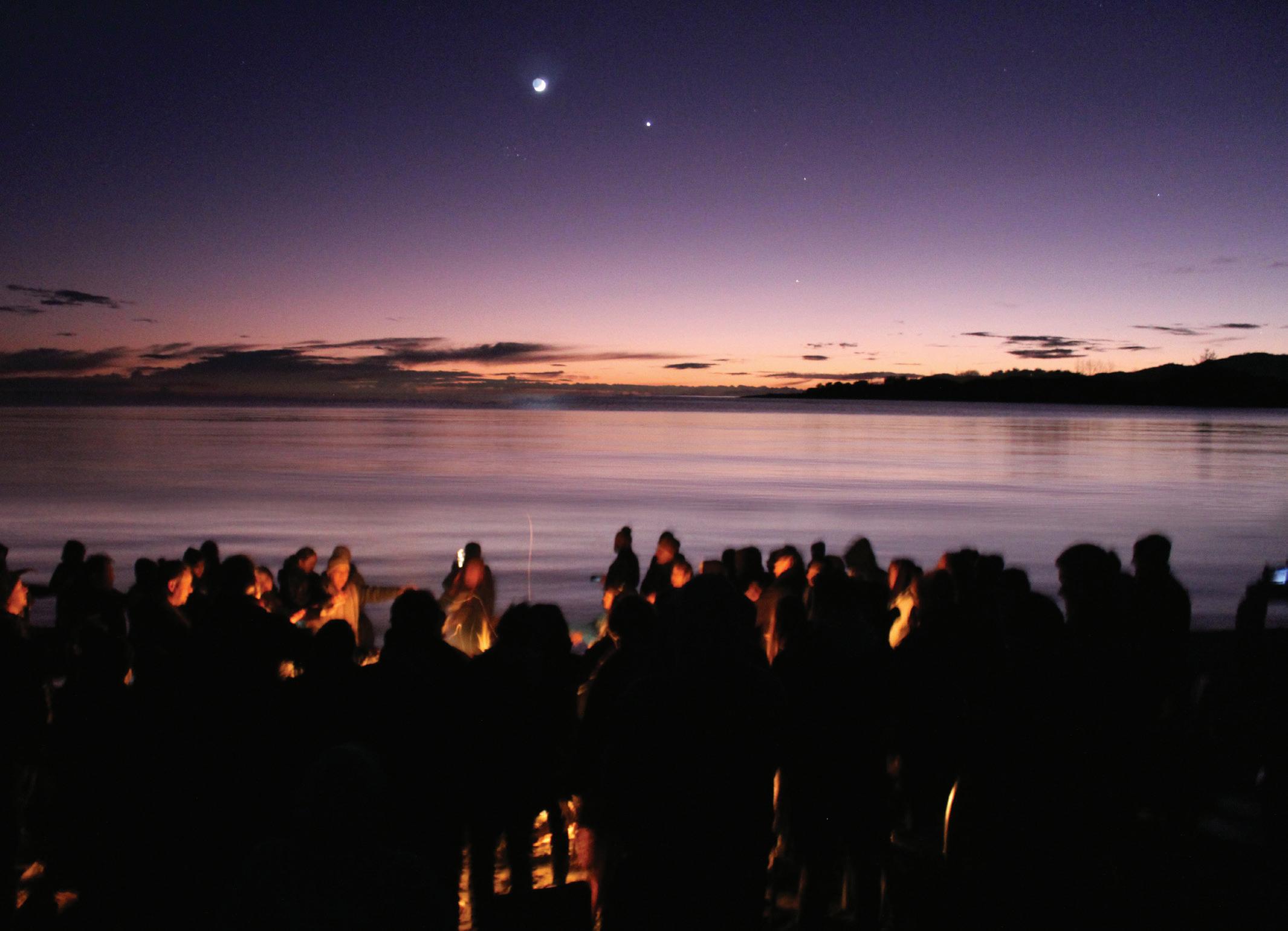

Our monthly sessions for 2023 have begun!
Ngāti Tama OfficeWakatu
Te Ra: Monthly
Te Wā: 6pm-8pm
Kōhanga - Motueka
Te Ra: Monthly
Te Wā: 6pm-8pm
Shared kai for supper.
He Ranga Kōrero
Aspects of the language and culture
Online through zoom
“He waka eke noa”
UPCOMING DATES
• 7th June 2023
• 21st June 2023
AND FORTNIGHTLY AFTERWARDS
EMAIL FOR UPCOMING DATES: whanau@ngati-tama.iwi.nz


Maramataka

ZOOM SERIES 2023
Ngāti Tama are offering a Zoom series on Maramataka for the below dates.
We will be having a kōrero around Maramataka in-line with our calendar launched at our Hui-ā-Tau 2023. These will run monthly, and include guest speakers.

TE PUNA || PAGE 31 EVENTS AND UPDATES
1 March - 7.30pm 5 April - 7.30pm 3 May - 7.30pm 7 June - 7.30pm 5 July - 7.30pm 2 Aug - 7.30pm 6 Sept - 7.30pm 4 Oct - 7.30pm 8 Nov - 7.30pm 6 Dec - 7.30pm Please email: whanau@ngati-tama.iwi.nz if you have any enquiries about any of the upcoming events






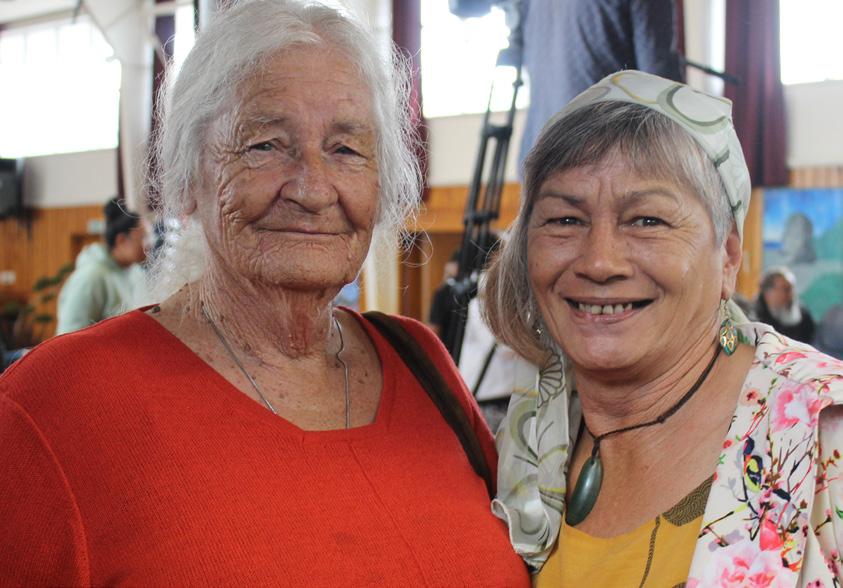

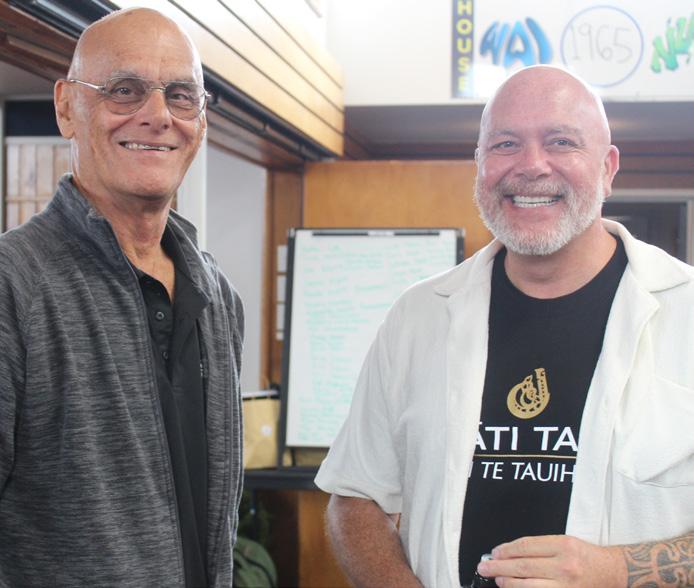




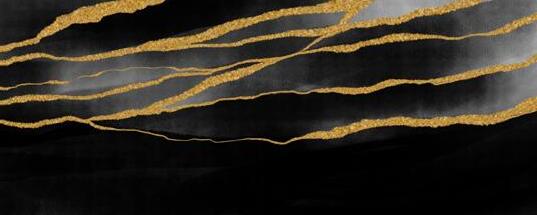

PAGE 32 || TE PUNA Sat 28th Jan 2023 – Sun 29th Jan 2023 - MOTUEKA
HUI-Ā-TAU
Ngāti Tama whānau at the Hui-ā-Tau and Wānanga - Motueka, January 2023.
2023
& Wānanga Whānau













TE PUNA || PAGE 33
WHAKAPĀ MAI | CONTACT US

NGĀTI TAMA KI TE WAIPOUNAMU TRUST 74 Waimea Road, Nelson 7010
MAILING ADDRESS PO Box 914, Nelson 7040

TARI 03 458 1740 | 0800 8262 494 (TAMA IWI) whanau@ngati-tama.iwi.nz
NGĀTI TAMA ONLINE ngatitama.nz | whanau@ngati-tama.iwi.nz







 Front cover photo credit: @cjmaddock
Front cover photo credit: @cjmaddock


























































































































